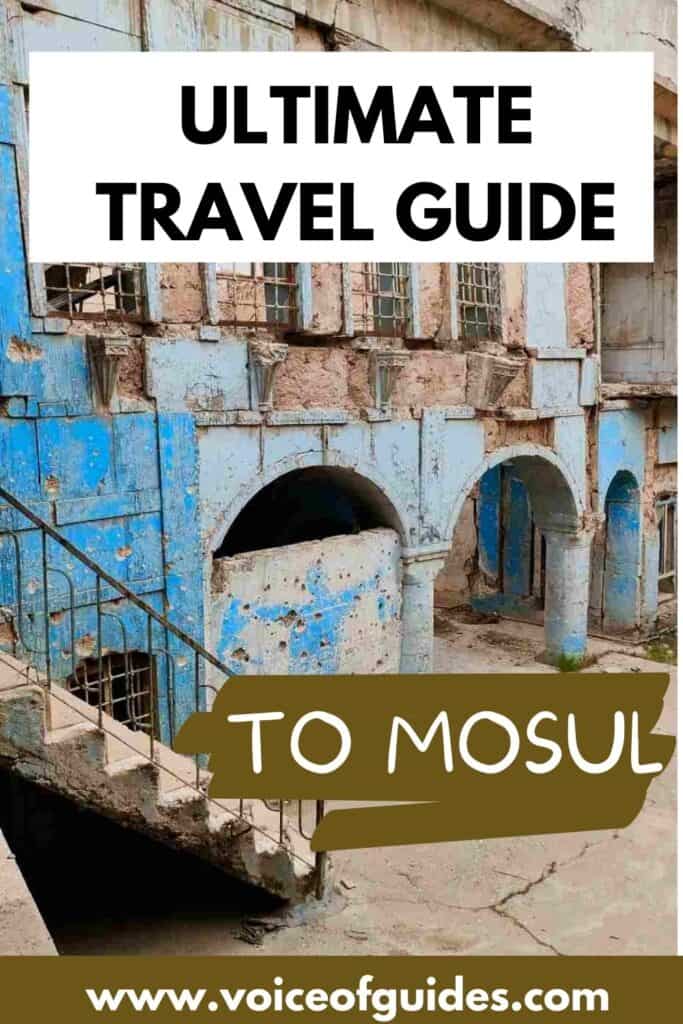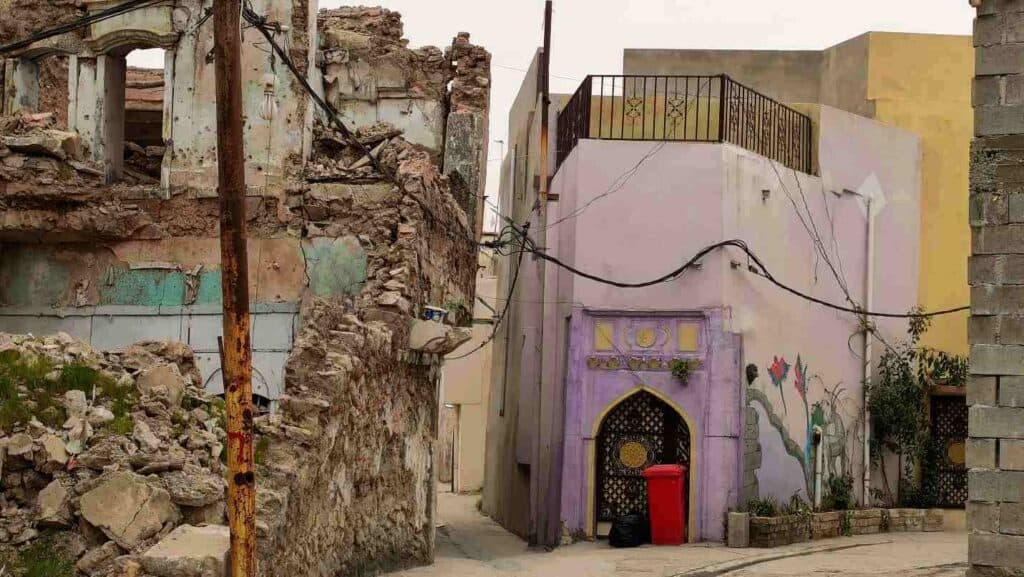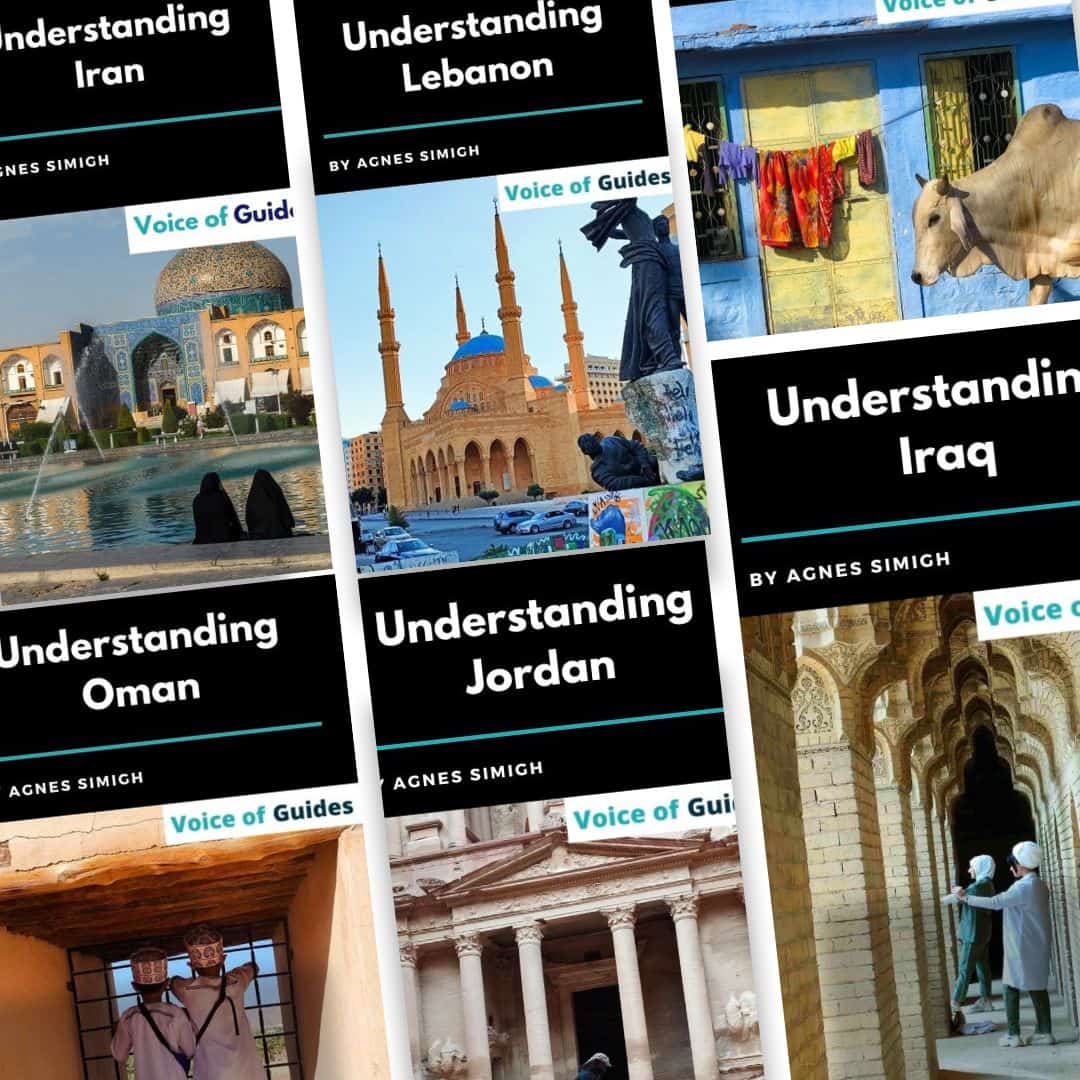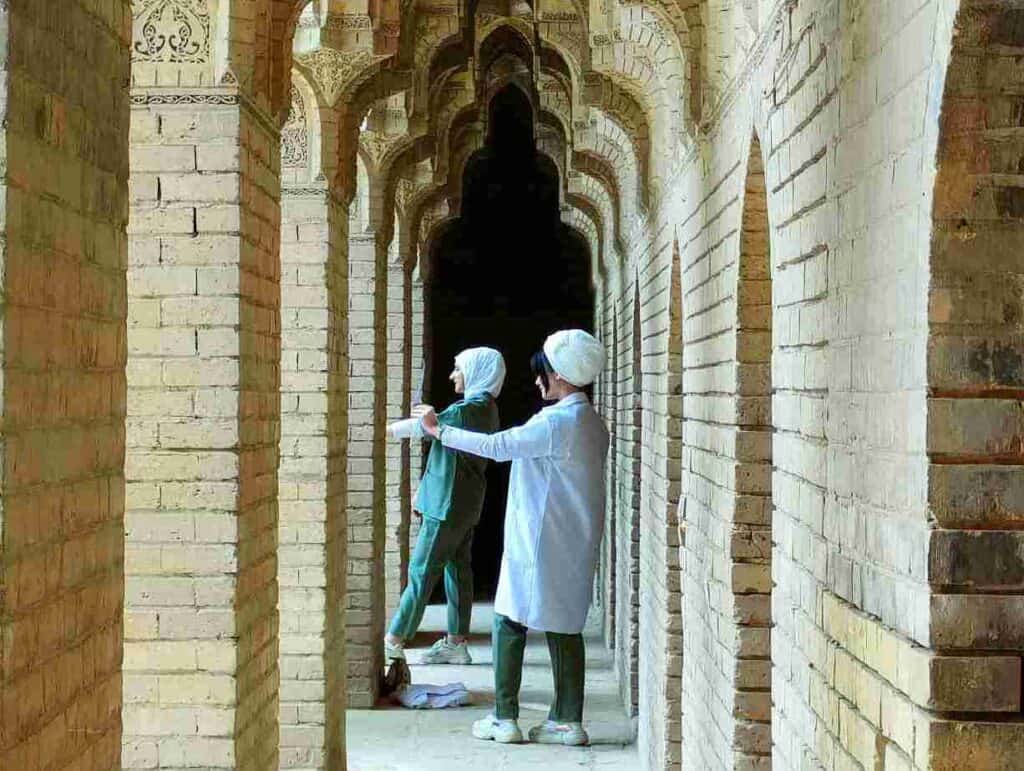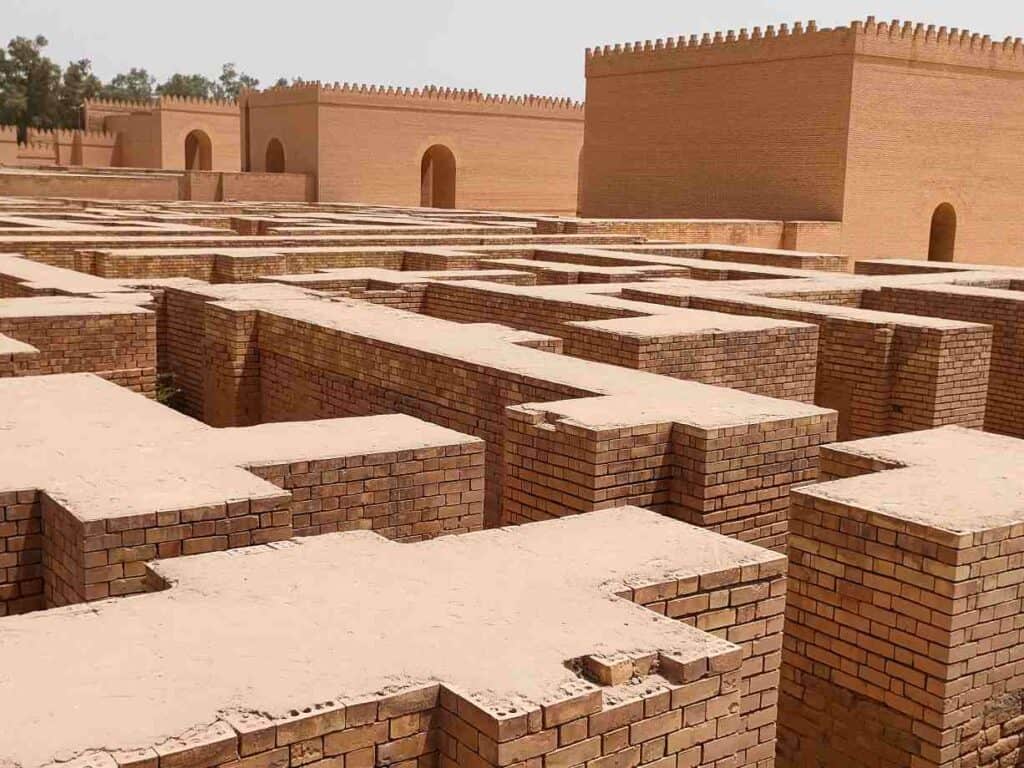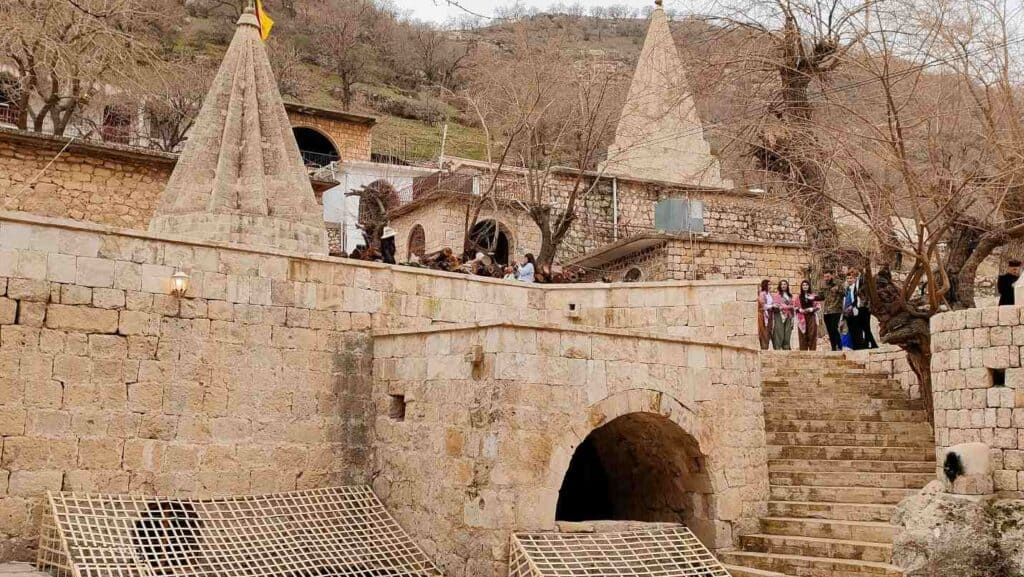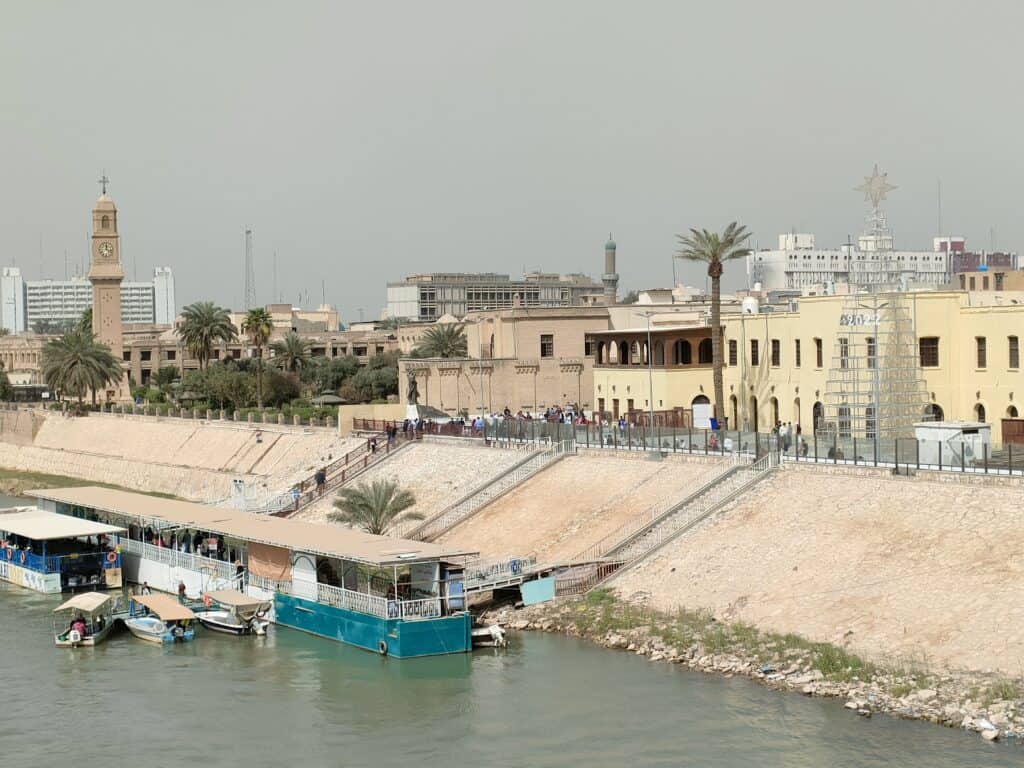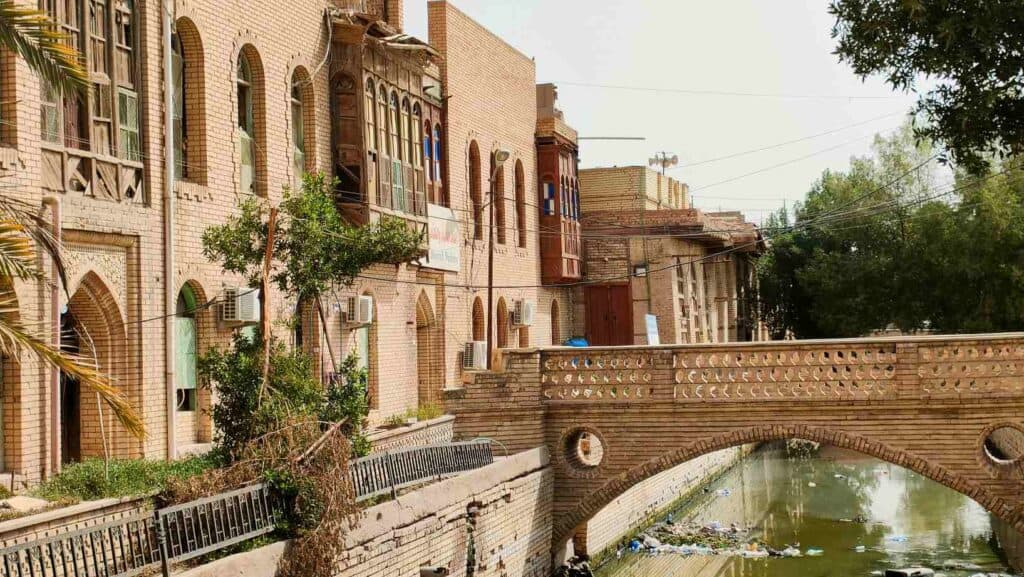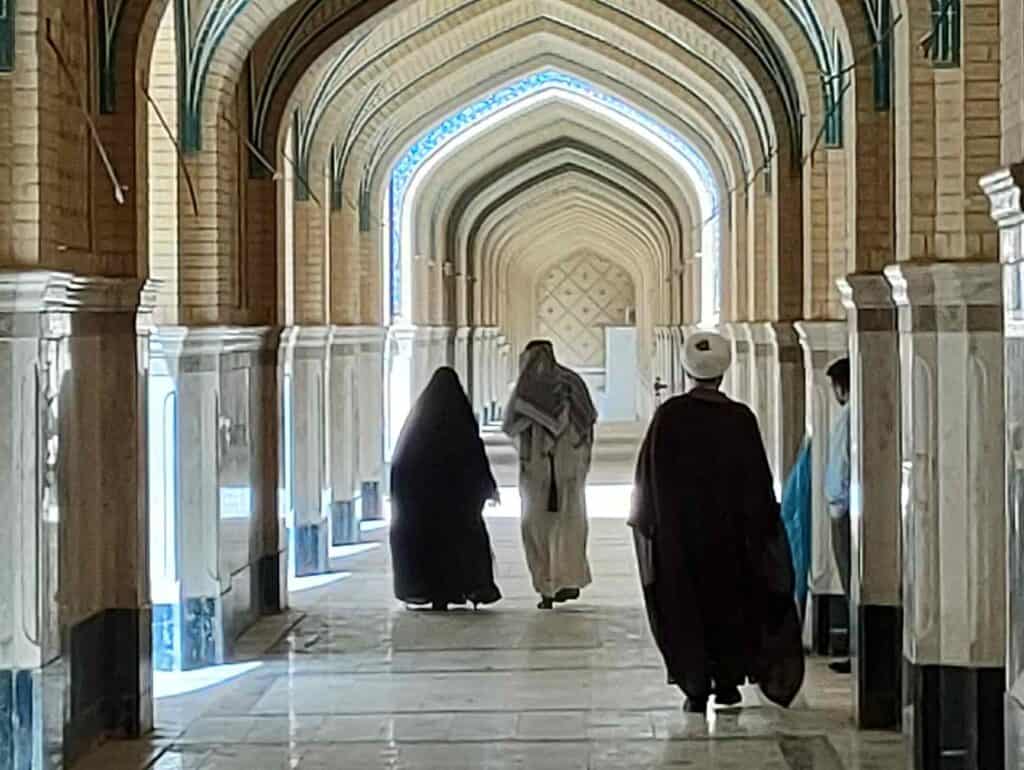This article may contain affiliate / compensated links. For full information, please see our disclaimer here.
Mosul encompasses the remains of ancient Nineveh, the last capital of the Assyrian empire, the largest and most populous empire of its day in the early first millennium B.C., though not much is left from that. Unfortunately, it is more engraved in the minds that Mosul was the capital of the Islamic State in Iraq and was heavily destroyed. The city is still under intense reconstruction. After a three-year-blockade under ISIS, in early July 2017, Mosul got liberated. This guide to Mosul gives you an insight into Mosul’s ancient and recent past, answering the questions if it is worth including it in your Iraq itinerary, what to visit, and the best things to do in and around Mosul.
- Is it worth (ethical) visiting Mosul?
- Is Mosul safe in 2022?
- The West and East sides of Mosul
- Brief history of Mosul
- Mosul under the Islamic State (2014 June – 2017 July)
- Mosul today
- How to get to Mosul?
- How to visit Mosul?
- Where to sleep in Mosul?
- What to visit and what things to do in the West part of Mosul?
- Things to do in the East (modern) part of Mosul
- What are the best places to visit on a day trip from Mosul?
- Other articles about Iraq
- More articles about the Middle East
- Pin it for later!
Is it worth (ethical) visiting Mosul?
Traveling is not only about visiting picture-perfect touristic attractions but also about witnessing ancient or modern history and the life of people. Visiting Mosul was one of the most moving and educative parts of my travel around Iraq. Despite the enormous damage ISIS caused, there is life and optimism again in Mosul. Waiters and taxi drivers want photos with visitors and happily invite them for tea.
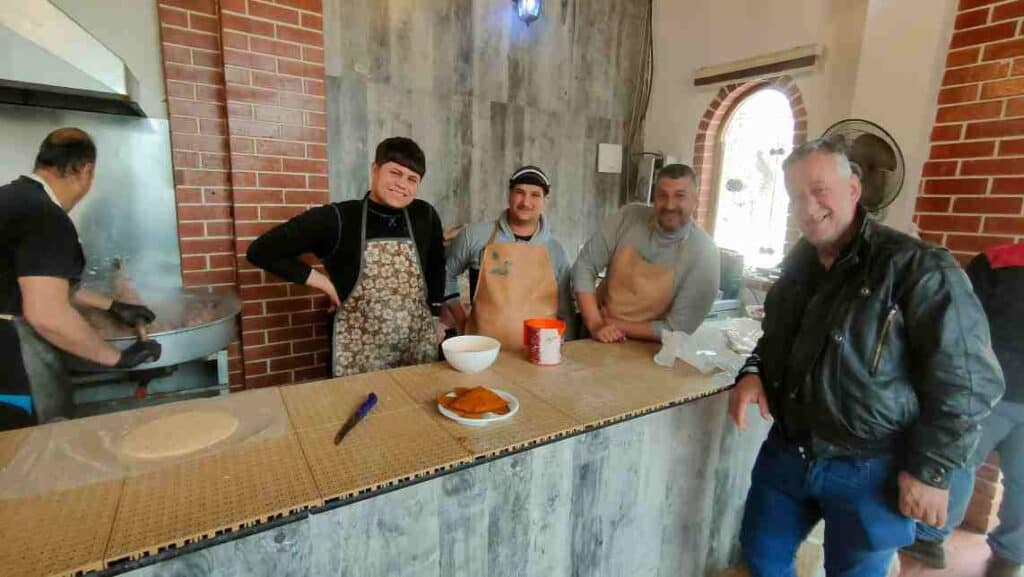
The bazaar and the fish market are not empty anymore. A band plays classical music in the cultural center that seems to be an oasis in the old city. From the top of the citadel, you get a great view of the riverbank and its bridges connecting the two sides of the Tigris River and see them being rebuilt one after the other.
In the summer of 2022, Mosul held Heritage days and even invited foreign travelers providing free accommodation to boost tourism in the city. It shows how much visitors are welcome there again. As long as tourists feel welcomed in Mosul, there is no question that it is ethical to visit it.
The ongoing intensive constructions anticipate incredible developments in the next couple of years. With more and more restaurants opening up, the old city becomes lively again.
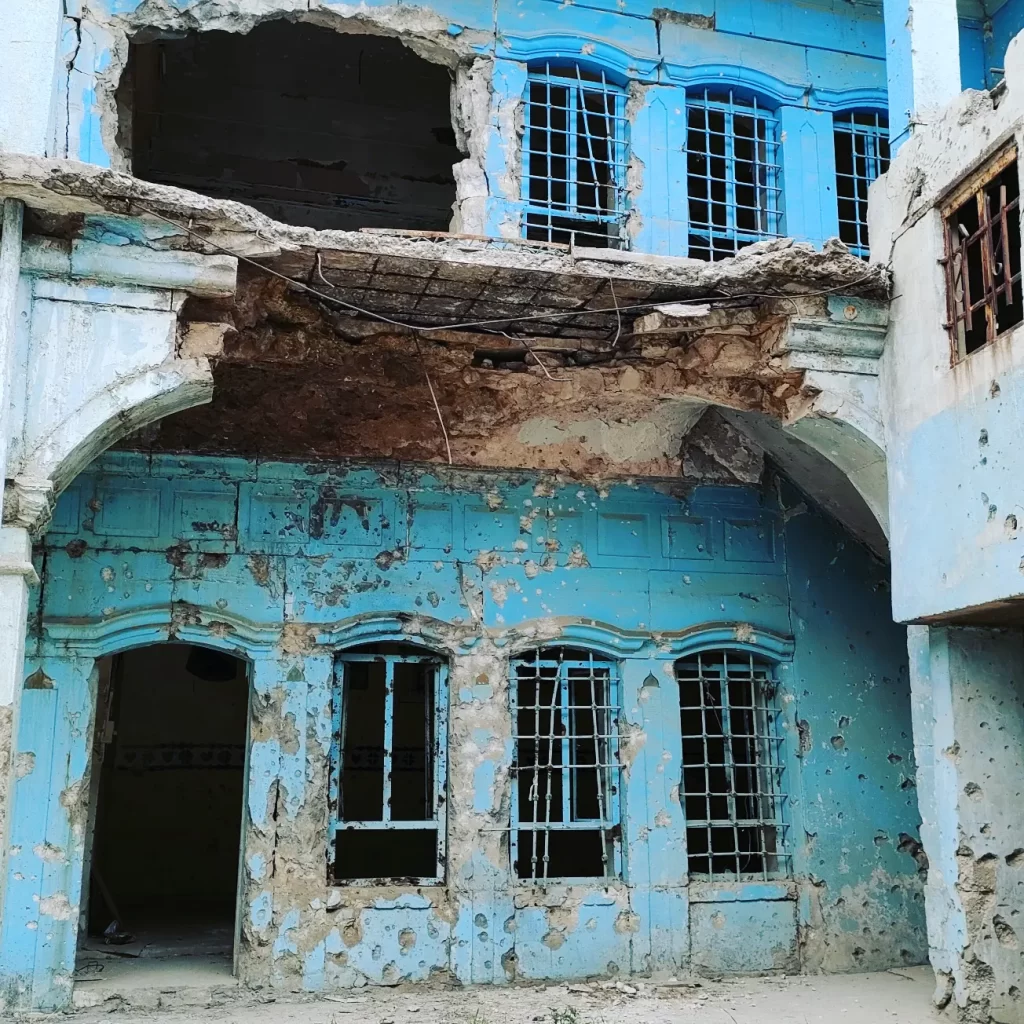
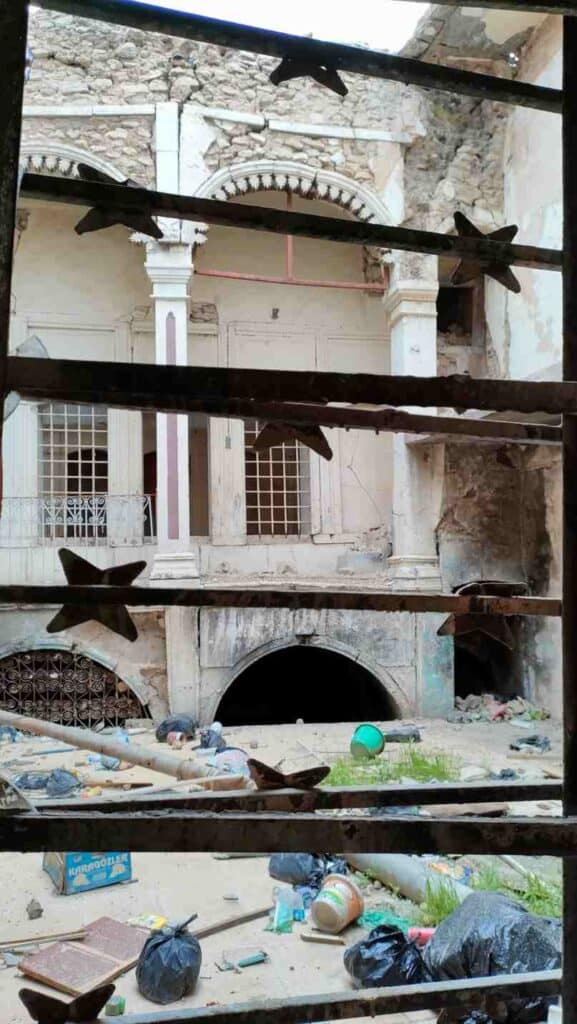
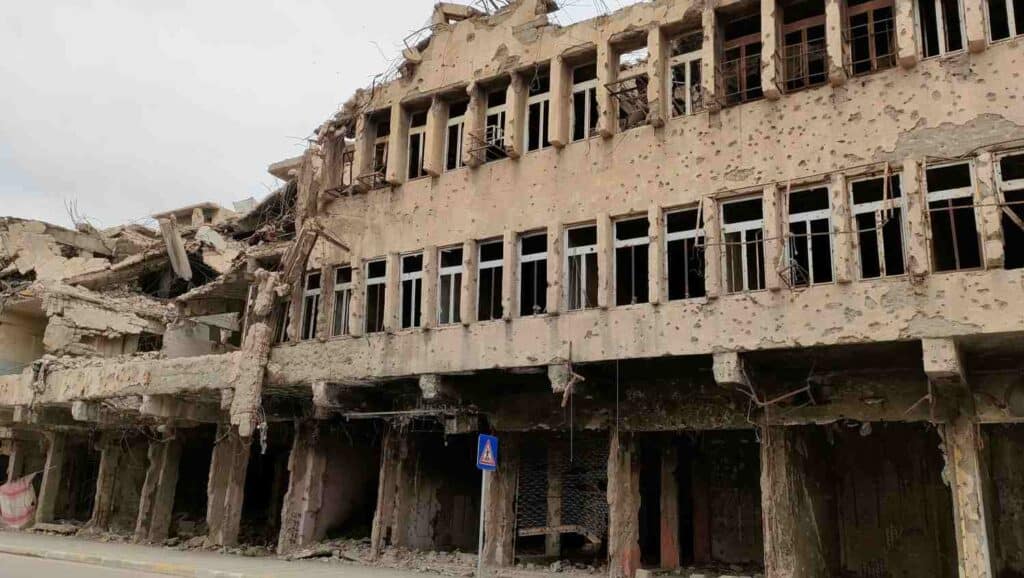
Is Mosul safe in 2022?
The country is in a stage of recovery, and the frequent security checkpoints are clear reminders of the devastating recent past. Iraq, including Mosul, is now considered safe for traveling independently as well. Though, some regions like Anbar and around Hatra are not without risk. Even though ISIS retreated to the desert areas and has largely been weakened in Iraq, it has not been completely eliminated, and military crackdowns against ISIS soldiers still happen. Domestic politics are tense, and there is an irresolvable disagreement between parties that resulted in protests and an inability to form a government after the elections of October 2021.
Check this article about all you need to know about traveling to Iraq
The West and East sides of Mosul
The Tigris River divides Mosul into two parts. East Mosul is larger and more populous. West Mosul contains the old city with numerous shrines, mosques, churches, monasteries, and the Mosul Museum. The jihadists destroyed most of these monuments and are hardly recognizable among the ruins, while others were used as a prison. However, Mosul is under intense reconstruction, and hopefully, it will regain its former appearance in some years.
Apart from the ruins of Nineveh, East Mosul was largely built since Saddam’s Baath party gained influence and is often called “the modern part” compared to the old city on the opposite side. The Islamic State has been less popular on the Eastside, whereas the Westside was always a strong opponent of the Maliki government and more supportive of ISIS upon their arrival. However, all that changed when ISIS revealed its real face.
The city on the right bank is now considered the old town with traditional houses, alleys, and a range of historic mosques and churches. There are five bridges connecting the two sides. By the end of 2022, all will be wholly or partly in use.
Nineveh Street, which runs east to west through the city, is the longest shopping street in Mosul.
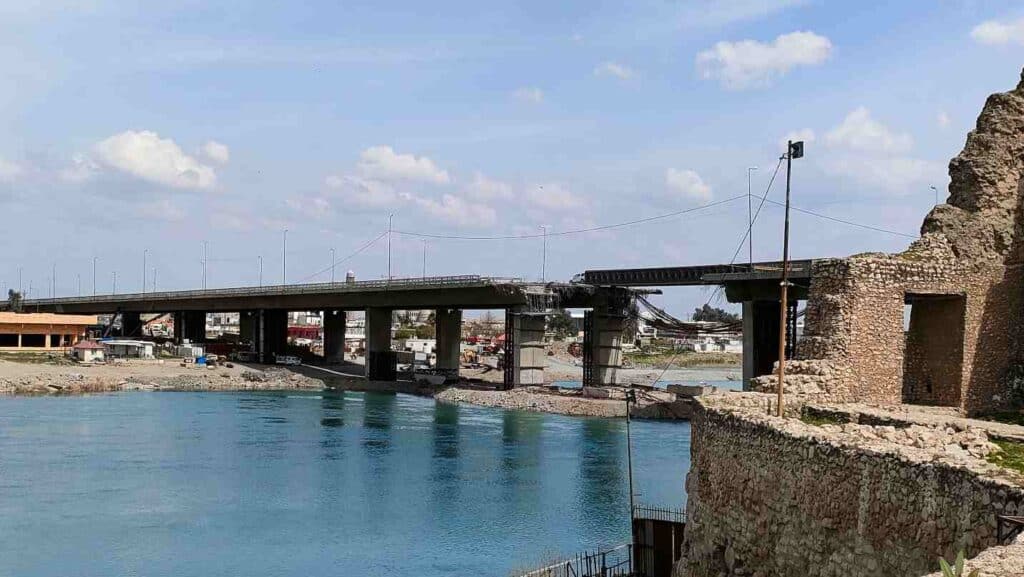
Brief history of Mosul
Mosul encompasses Nineveh, the capital of Assyria from the 9th century B.C. Mosul’s wall once had 13 gates, but hardly anything of that is left. For that reason, many shops are called Al-Bab.
Under the Akkadians, Nineveh was a temple city. The Assyrians seized it sometime in the fourteenth century B.C. The great Assyrian kings used to establish new capitals to glorify themselves and their favorite gods. Around 700 B.C., Sennacherib made Nineveh his capital, dedicating it to God Ishtar. Under Sennacherib, archaeologists believe, Nineveh became the most populous and advanced city of its day, and the Assyrian Empire the largest on earth, with outposts and tributaries stretching as far north as the Caucasus and as far south as Sudan, to Persia in the east and Cyprus in the west. It took in Asia Minor, Egypt, and the Levant.
King Ashurbanipal’s library at Nineveh was the greatest ancient center of learning before Alexandria, containing thousands of tablets on those subjects and more.
Insurance: Safetywing is a cheap travel and medical insurance that also covers COVID-related issues in most countries, including Iraq.
Flights: Use Google Flights or Skyscanner to book your flight to get the best flight offers.
It traditionally had the most mixed population with Arabs, Syriacs, Armenians, Kurds, Turkmen, Jews, Christians, Muslims, and Yezidis. Mosul and Nineveh region was home to one of the most ancient Christian communities, with every branch having a church here. The freedom to practice their religion varied under different historical periods and rulers.
In 1199, Badr ad-Din Lulu, a former Armenian slave, was appointed as a minister and later took the title of sultan. His 60-year-long reign was the golden age of Mosul. Arts flourished, and the churches and mosques were rebuilt. He managed to maintain peace even against the Mongols. But his son did not follow his father’s politics and rebelled against the Mongols, who occupied and ravaged Mosul. The Mongol rulers persecuted the Christians, and in the 14th century, the Christian Community vanished from South Iraq. Bigger communities only existed in Mosul and around, but they faced an increasingly difficult fate.
In the 18th century, the Ottoman pashas of the Jalili family supervised Mosul, but it only became under direct Ottoman control in the first half of the 19th century.
Located near the borders of Turkey and Syria, the city has been a hub of trade, licit and illicit, for centuries. Mosul’s many mansions and beautiful marble-and-tile mosques date back to this period.
Mosul under the Islamic State (2014 June – 2017 July)
In June 2014, the expansion of the Islamic State entered a new epoch by seizing Mosul, which was five times bigger than their Syrian headquarter, Raqqa. After conquering the cities of Anbar province to the West of Baghdad, including Fallujah and Ramadi, they turned to Mosul instead of the capital. A cosmopolitan middle-class city of 3 million inhabitants, with rich history, attractive districts, and home to one of the region’s best universities, was the trophy of ISIS. All that happened without much fight and resistance.
ISIS got official control over Mosul on July 4, 2014, when Abu Bakr Al-Baghdadi, the leader of the Iraqi branch of ISIS, climbed the minbar (a pulpit in the mosque from where the imam delivers his sermon) at the Grand al-Nuri Mosque in Mosul and proclaimed the existence of the Caliphate and himself its Caliph.
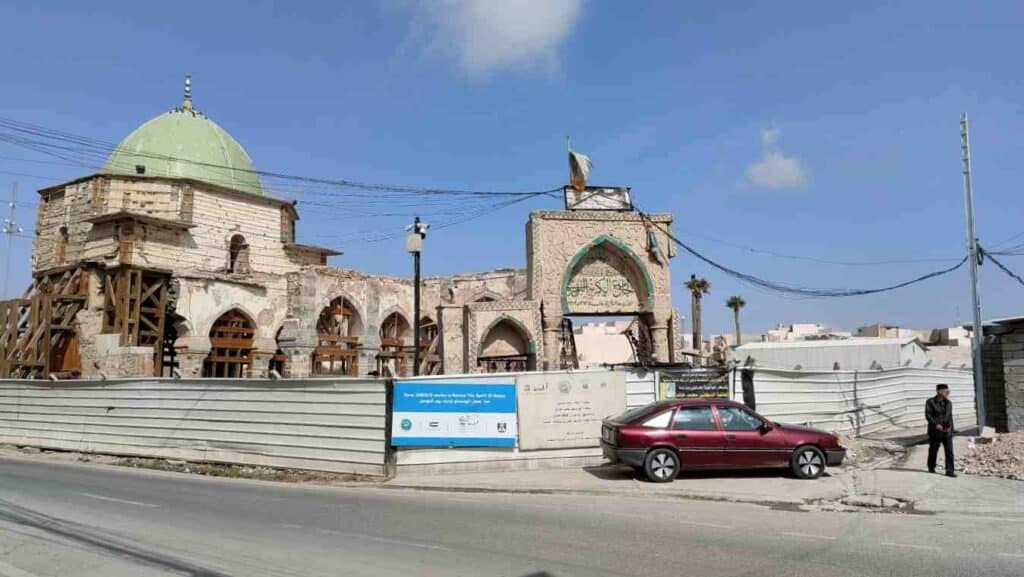
Many people were forced to flee, but many more remained under the administration of the Caliphate. If they tried to escape, they were killed. The bridges linking the right and left banks exploded, making it impossible to get from one part of the city to the other. Most children stopped going to school for years as ISIS did not provide proper education. Religious minorities were forced to convert, had to leave, or were killed.
There was no electricity and water for long months, and the infrastructure collapsed. The situation was the worst in the old city of Mosul.
Read this book about life under ISIS in Mosul
Being a strong opponent of the Maliki government, ISIS was partly welcomed by the Moslawis in the beginning. They collected donations for the poor, lowered the rents, arranged cleaning of the streets, fixed the sewers, and built new roads.
They started to recruit locals by promising houses, cars, and a salary much higher than the government could give. Some believed in the cause, while others sought a competitive salary.
But this changed soon when public executions started, videos of beheadings and dismemberments went viral, and they restricted daily life. Women could only wear loose black abayas, black burqas and chadors, black gloves and black shoes. Smoking and alcohol were banned. Men had to grow a beard; even the length was defined. The Caliphate disabled all communication and forbade mobile phones and movies, except their own propaganda and execution videos.
People experienced deprivation like never before. During the battle for Mosul, which lasted ten months, the Iraqi army and the Kurdish Peshmerga fought together for the first time.
Mosul today
Mosul is the second biggest city in Iraq with 3 million inhabitants, the capital of the Nineveh governorate close to Iraqi Kurdistan, and an agricultural center of Iraq.
Located to the north of Baghdad, the climate of Mosul is milder than that of the southern cities, and the summer with extreme heat is also shorter here, and in winter, the temperature can drop to under 0 degrees.
The city also had an ancient Jewish population, most of whom were forced to leave in the 1950s, mainly to Israel.
Mosul is, until now, well-known for its outstanding food, especially the “kubba”, the filled meat pie popular all over the Middle East. It is a sort of meat pie: two layers of bulgur dough mixed with beef stuffed with lamb and pine nuts.

The infamous sons of Saddam Hussein, Uday and Qusay, took refuge in the city and were killed by the Coalition forces in 2003 in Mosul. Mosul is the only major Iraqi city that never had a statue of Saddam, and it systematically took a position against the government.
How to get to Mosul?
Read this article about other important things you must know before traveling to Iraq
You can easily reach Mosul from the main cities, like Baghdad, Erbil, Kirkuk and Duhok with a shared taxi.
From Bagdad: A shared taxi costs 25000 IQD and takes 6 hours from the Al-Alawi Northern bus terminal.
From Duhok/Erbil: Shared taxi costs 10 000 IQD, and a minibus costs 6000 IQD, approximately one hour.
Important: You must have a visa to Federal Iraq to visit Mosul, which you can get on arrival at the airports in Baghdad, Najaf and Basra. If you arrive in Iraqi Kurdistan, your visa on arrival is only valid in the Kurdish territory, and you cannot go over to Mosul. So, keep this in my mind when planning your trip to Iraq. Some tourists managed to get to Mosul from Erbil in Kurdistan with local connections, but I would not recommend trying. You never know who stands at the security checkpoint, and you can easily have problems. What worked one day does not especially work all the time in Iraq.
How to visit Mosul?
You can get around on foot in Mosul and by taxi to the modern parts. However, in Mosul, I find it extremely important to get a guided tour to understand what Moslawis went through during the time of ISIS and to be aware of its ancient heritage. Otherwise, you only wander amid ruins and destroyed buildings. A guide helps you identify the most relevant structures. With my tour guide, we passed by the former Coca-Cola factory. He explained that 3-400 people were trying to cross the road here to the other side during the months of liberation where the Iraqi army was stationed.
“It was a deadly venture. Half of them died.” – he said.
Most tour guides are from Mosul, who lived the years under ISIS, and can share their personal experience with you. Fortunately, now there is a network of guides who offer 8-hour sightseeing for different prices depending on the number of people, covering both the old and the modern city. But you can also get customized private tours according to the time you have. VisitMosul is a group of 5 tour guides who welcome tourists. They will launch their website soon. Until then, you can book a tour with them through Instagram.
You can also contact the following people to book a guided tour:
Othman Anees (Facebook messenger)
Ayoob Thanoon from Mosul Heritage House (Facebook messenger)
Harith Firas (Private Facebook, guided tours in Mosul, Youtube)
You can also go to the Mosul Heritage House on arrival, and they will help you get a guided tour the day after.
Where to sleep in Mosul?
1. Kahramana Hotel has a perfect location in the middle of the old city of Mosul, with many places within walking distance. A night costs 25 000 dinars. It is the best option for low-budget travelers.
This is the location: فندق كهرمانة (Kahramana hotel)
https://maps.app.goo.gl/346gJLcjmDK29ypy5
2. Modern palace hotel فندق مودرن بلازا –
3. Ewan Hotel
Price: approximately 60$ per night
4. Royal city Hotel فندق رويال ستي
Price: 30-40 000 IQD
What to visit and what things to do in the West part of Mosul?
Since most monuments, mosques, and churches were destroyed by ISIS, you can visit most of the sights only from the outside. Many monuments you read about in older books have since become non-existent or ruined. Even those churches that were not destroyed are hard to get access to. It depends on when you go there. Here you will find a list and status of the heritage buildings if you look for something specific.
Ruins of the Bashtabya fortress
It is best to start your day by climbing up to the citadel’s ruins on the highest point of Mosul to have a great view of the city. It was almost unconquerable during the Middle Ages. The ruins you can see today date back to the Ottoman period. Another interesting thing is the sulfur spring right below the fortress at the riverbank. People often come here and carry home some of that to treat dermatological problems.
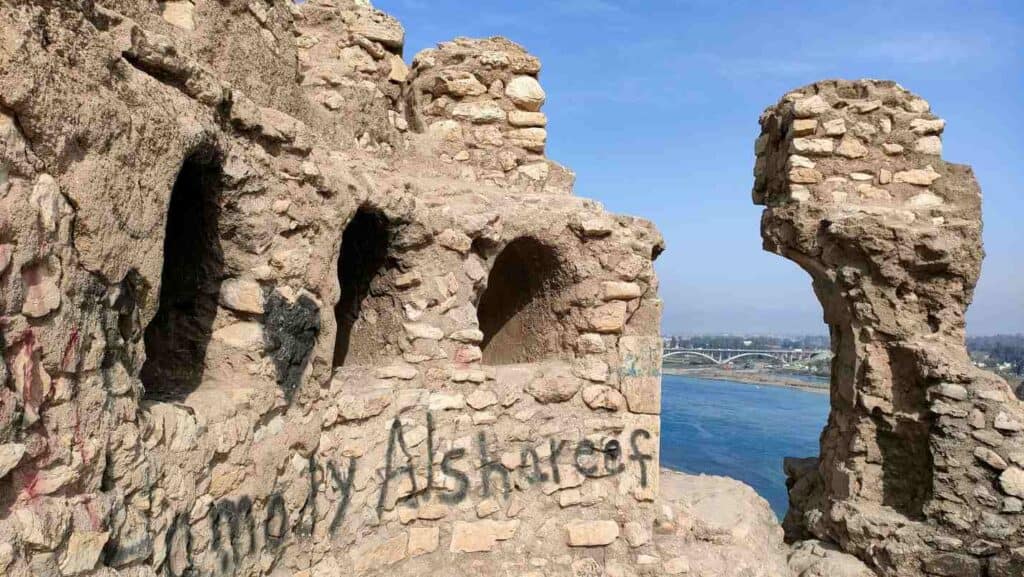
Al-Imam Muhsin mosque
Once you are around the Bashtabya fortress on the other side of the road, do not forget to visit the Al-Imam Muhsin Mosque. It is one of the few already reconstructed monuments of Mosul. It was initially built as a madrasa by a Seljuk ruler in the 12th century, but later it became the mausoleum of Imam Muhsin with a prayer hall added to that.
Next to the Al-Imam Muhsin Mosque stands the partly damaged Mary Church.
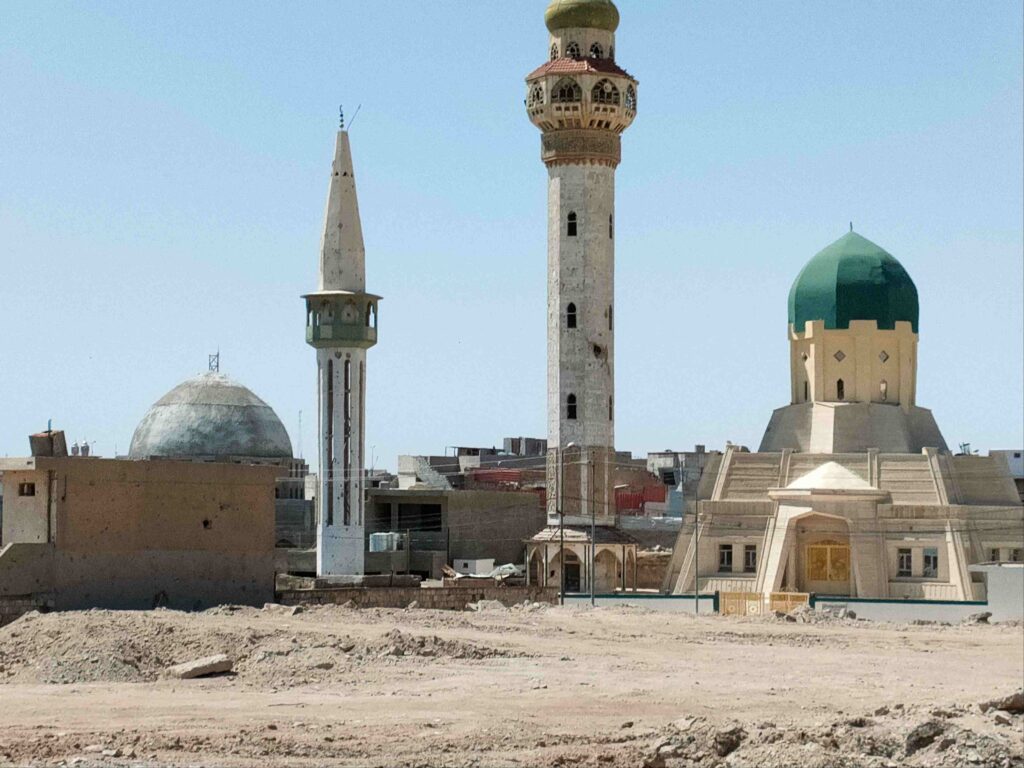
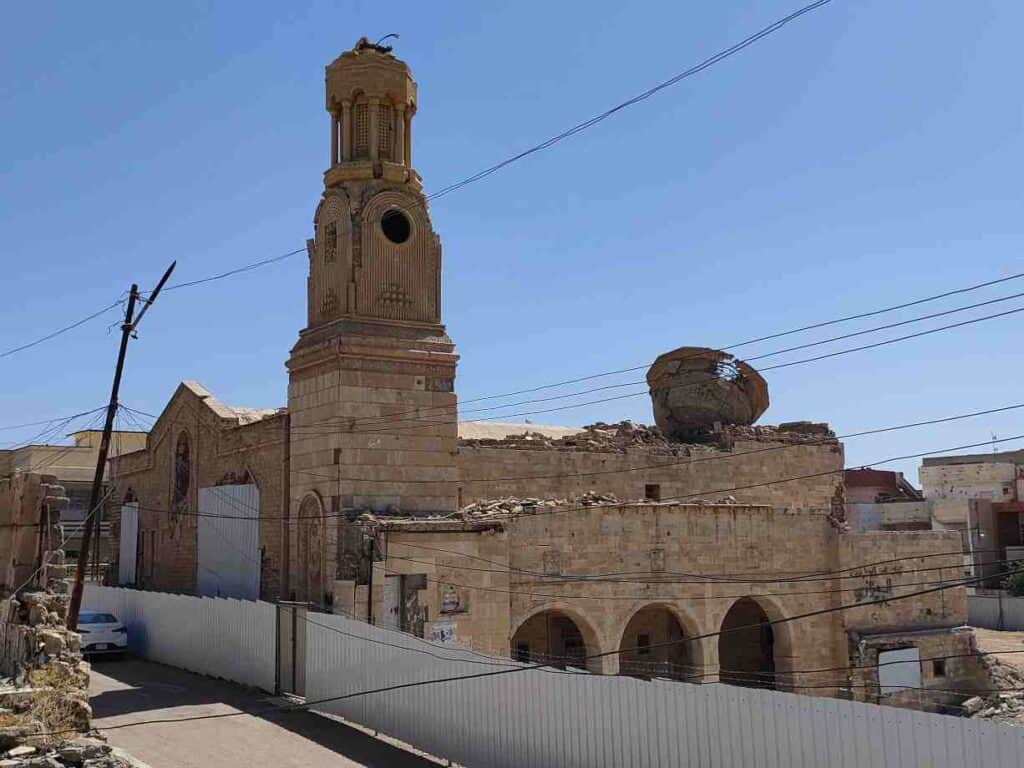
Qara Serai (The Black Palace)
It was built in the 13th century by Sultan Badruddin Lulu (1213–59) as a royal palace. The Ottomans called it Black Palace as its walls were blackened as the result of smoke from the fires of the inhabitants. Once it was equipped with gardens and fountains, but after having been neglected, only the foundations are left from the former splendor. It is located 50 meters from Mosul Heritage House.
Mosul Heritage House
Close to the Bashtabya fortress is a beautiful mansion that functions as a cultural center. The organization is dedicated to preserving Mosul’s heritage, hosting cultural events, and offers guided tours for students and foreigners in Mosul. Apart from that, they organize cleaning campaigns. It is a pleasant place with beautiful architecture, and it is worth stepping inside to immerse in the atmosphere.
Here is their website for more information
Opening hours: every day 11 am – 11 pm
On Friday: 4 pm – 5 pm to 11 pm
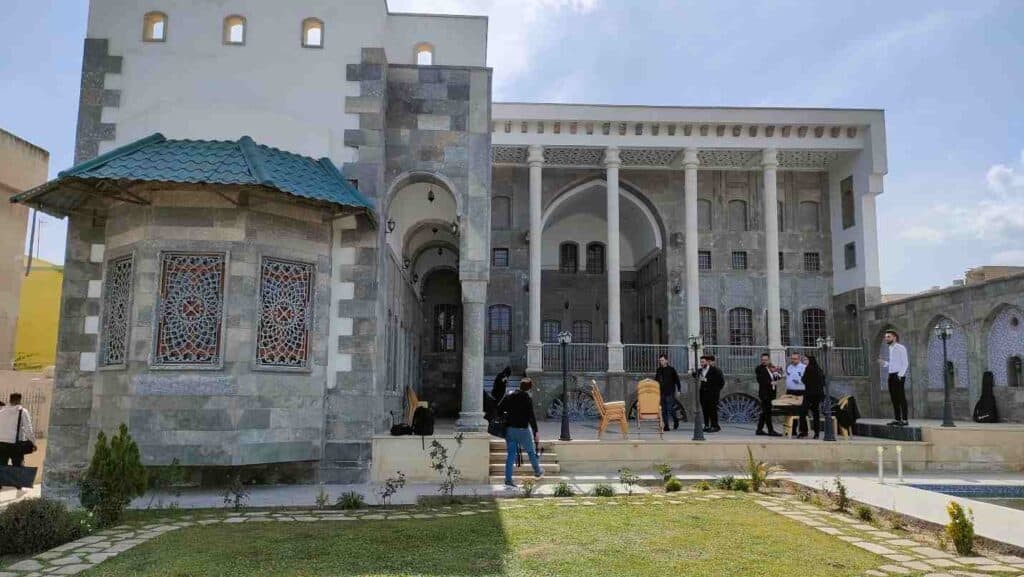
Try to find hidden gems amid the ruins
I suggest wandering alone and discovering the architectural masterpieces amid the ruins while understanding the tragedy that happened only a few years back.
As I was visiting Mosul, the vast number of buildings in ruins was still striking. As I am walking amid the debris, some intact fragments of architectural gems, like arches, doors, or domes, give a hint of the former beauty of this city. I encounter a man who tells me to follow him and opens a locker with his key. It is his house, in a terrible state of repair. As we move closer, he is pointing to an intricately carved niche. He wants me to see how it was before. His other house is already renovated, and he says this will also be.
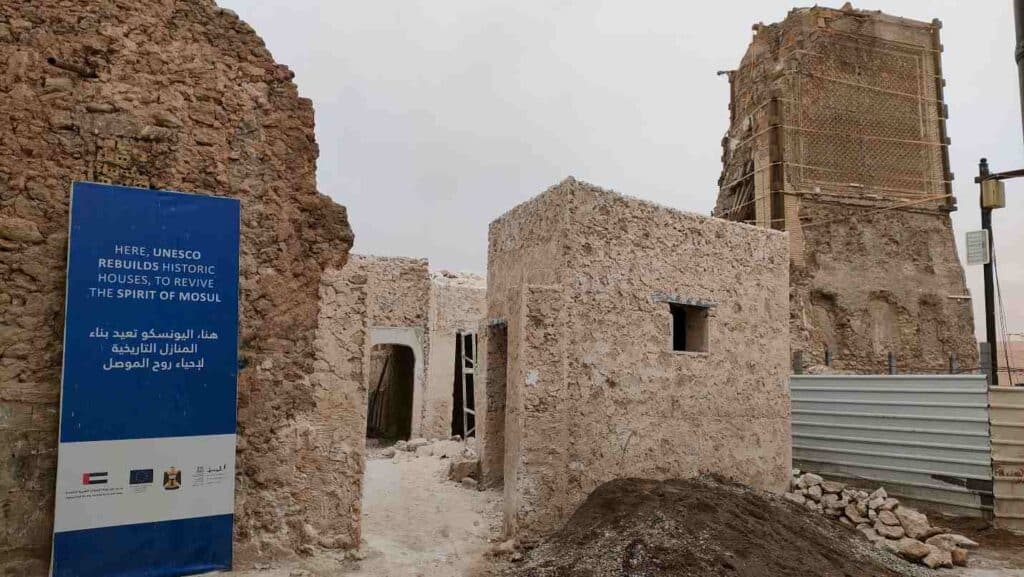
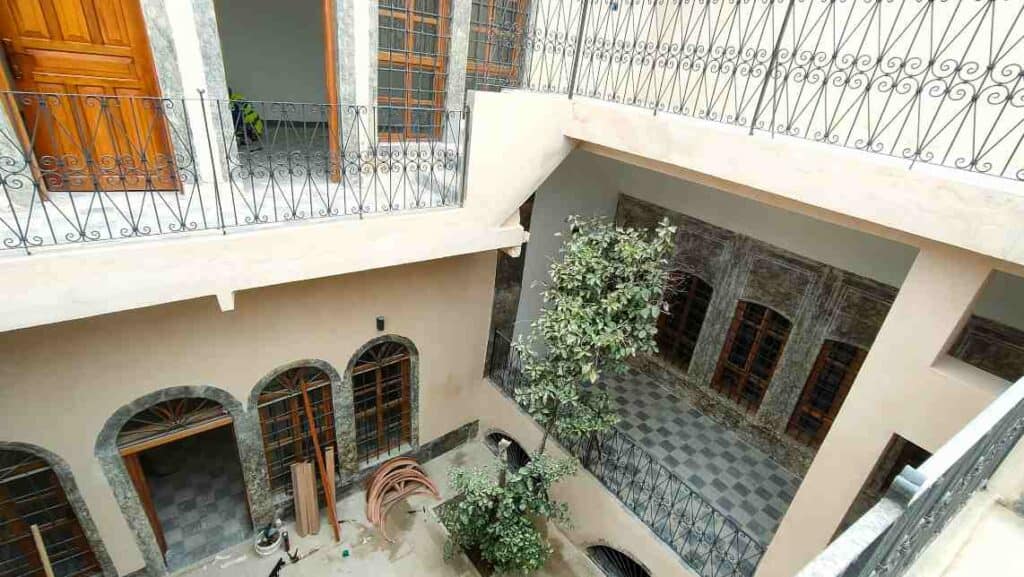
In the quest for hidden treasures, I end up in the area with some fine examples of already renovated houses. An employee is kindly showing me around one of the mansions. It is heartwarming to see what they can build up from scratch.
Many mansions were built with magnificent inner courtyards from which little is seen outside. The gates are usually decorative; the frames are made of local marble or alabaster. Water runs in open channels through the narrow streets, something specific to Mosul.
If you take the street just behind the Grand al-Nuri Mosque, you enter the area marked by UNESCO. The pavements and houses are under reconstruction, and some homes are already finished, which gives you an idea of what it would look like. During my visit, I was invited to look at a newly finished traditional mansion with an inner courtyard by the staff from UNESCO. It was a great experience to see that.
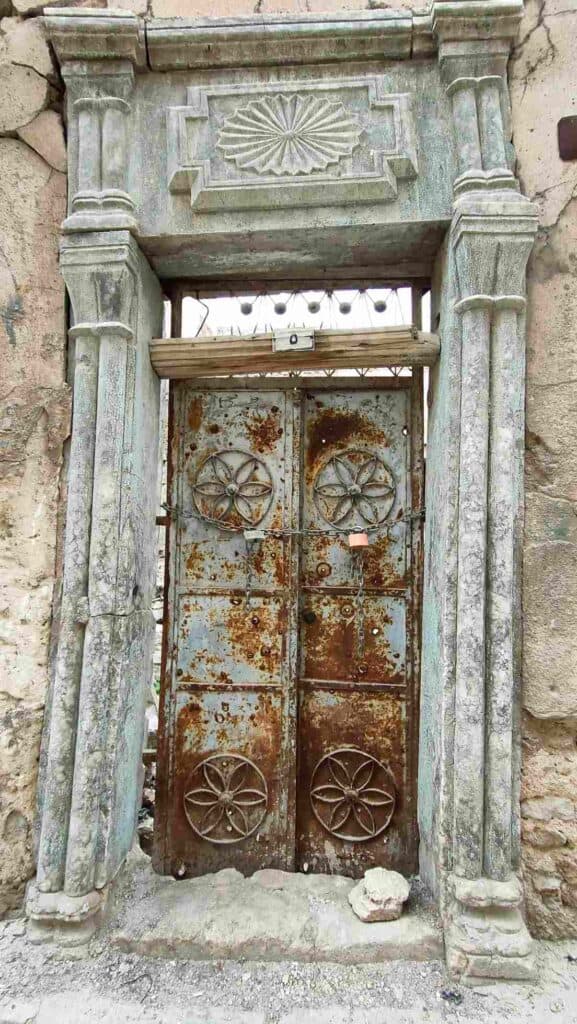
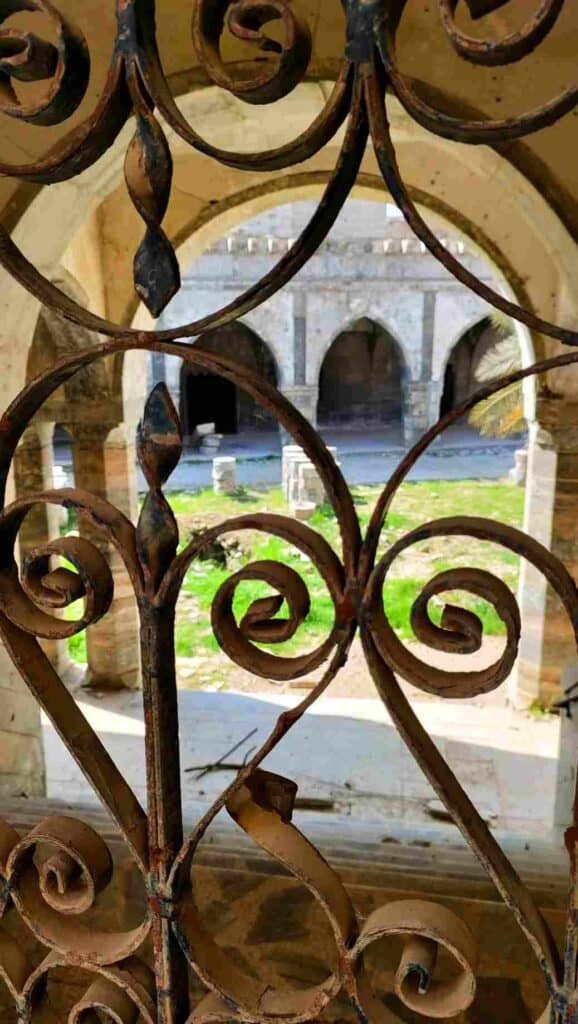
The Grand al-Nuri Mosque or Great Nuriddine mosque
It was always the center of spiritual life in Mosul and the spiritual center of the Caliphate. However, it became world-famous through the video footage showing Abu Bakr al-Baghdadi proclaiming the seizure of Mosul by the Islamic State. Most churches and monasteries were destroyed because they were idolatrous. But there is no logical explanation why they ruined even mosques, like the Grand al-Nuri mosque, since the jihadists claimed to be the most faithful followers of Sunni Islam. It shows how they preached something without a funded ideology.
Nur ad-Din constructed the mosque in 1172, but it was demolished after WWII. Its originally 65-meter-high minaret is now much smaller after the destruction. But it will be restored to its original height. The upper part has a brick decoration. The minaret is tilted according to the prevailing wind, 2.5 meters from the vertical. According to local legends, Prophet Mohammed flew by here when he ascended to heaven, and the minaret bent out of respect. However, Christians say that the minaret bows towards the tomb of the Virgin Mary, believed to be near Erbil.
If you book a guided tour with VisitMosul, they can arrange a permit to visit the mosque inside. (For that, book it two days ahead).
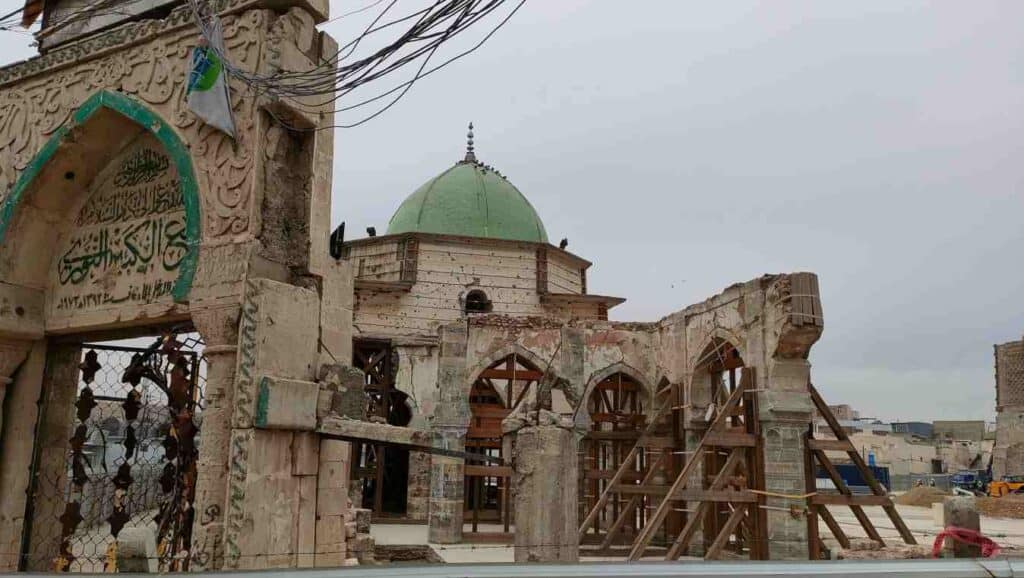
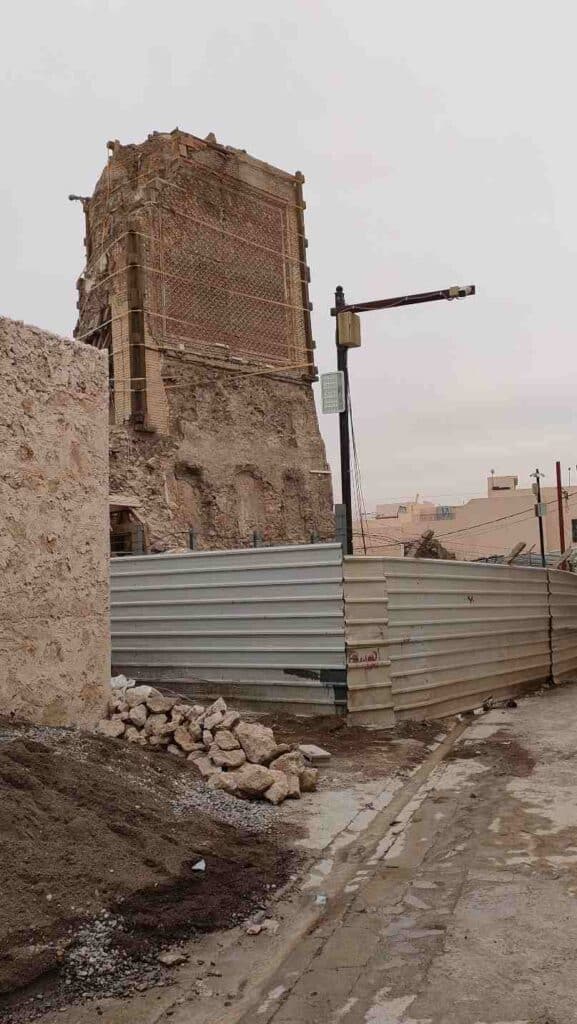
Bytna private museum – one of the best places to visit in Mosul
Do not miss the small alley painted with colors close to the al-Nuri Mosque. It is a small paradise in Mosul with an art gallery, souvenir shop, and the private museum of Bytna that the French president Emmanuel Macron and the Iraqi prime minister also visited. There is a café on the upper floor and a small gallery with a precious collection from the older times of Mosul. It is also the best place to find some souvenirs.
They are happy to give a guided tour to every visitor. Also, in the alley, you can find an equally colorfully painted restaurant in a garden with the most famous Iraqi dishes. It is probably the best place to have dinner in Mosul.
Check out their Facebook page for the location.
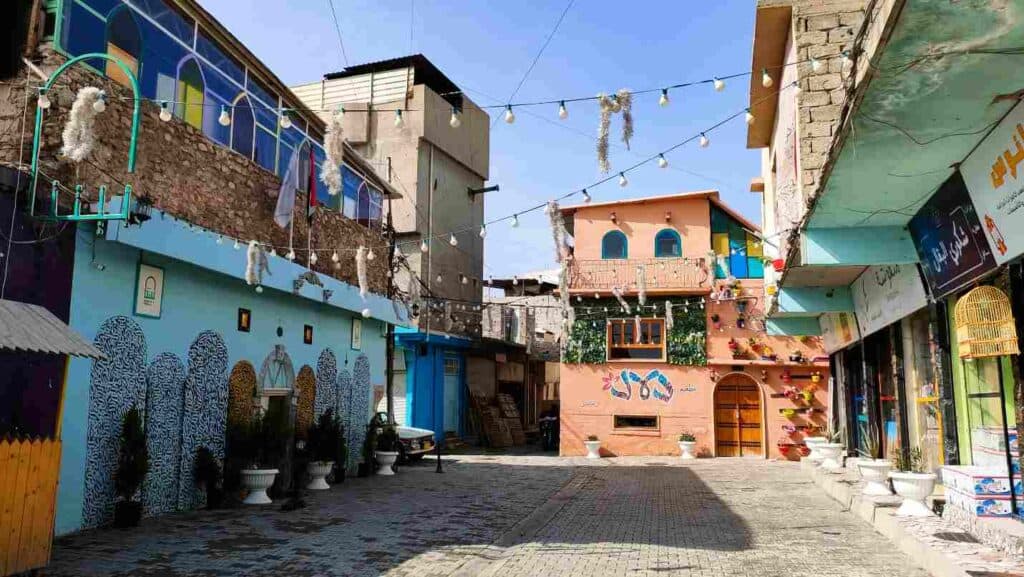
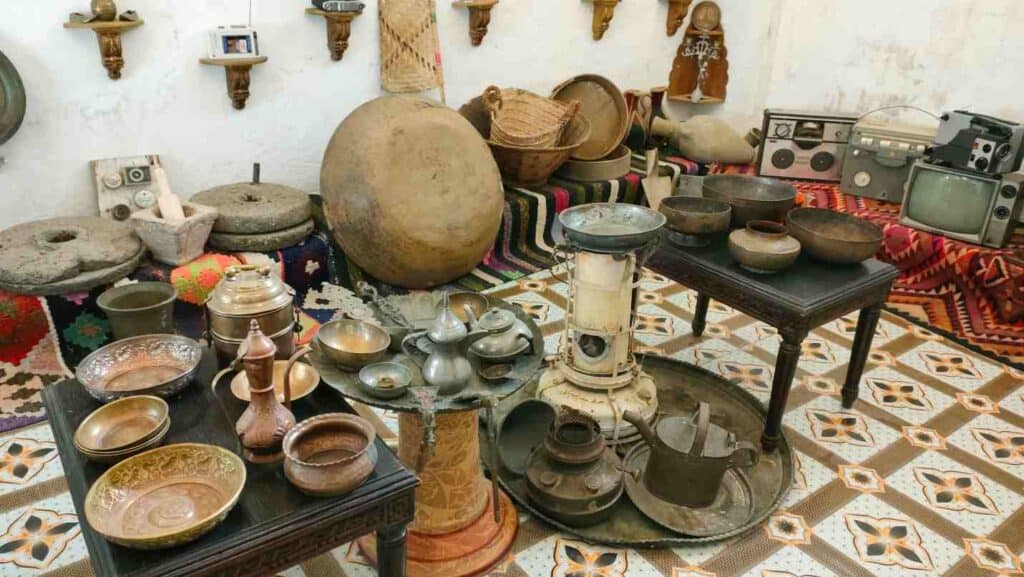
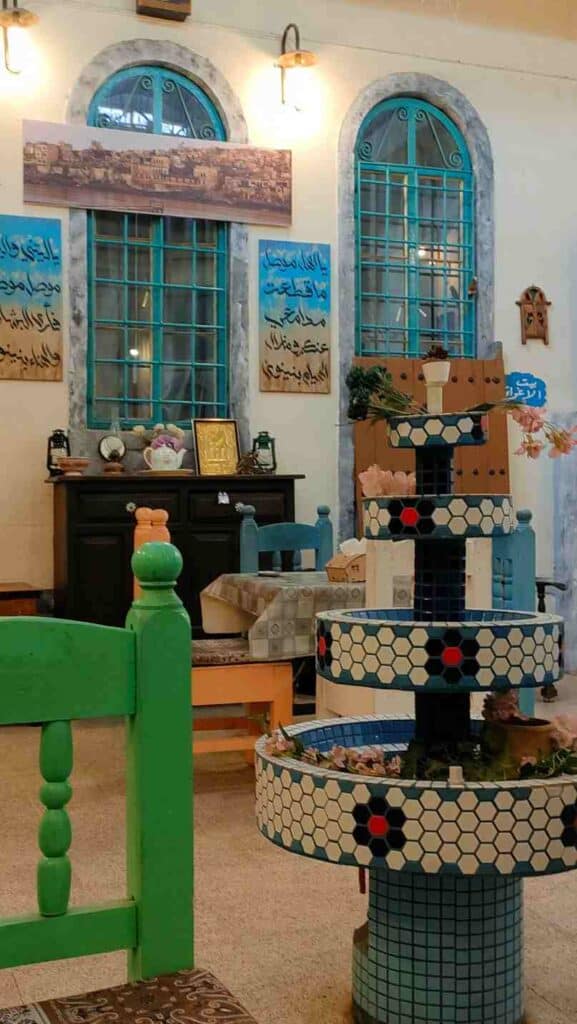
Latin Church or also called the Clock Church (Al-Saa)
Founded by the Dominicans, The Catholic Latin Church in the center of Mosul is one of the most famous churches in the city. It is named after the clock it contains, which was donated to the church by the wife of Napoleon III. In 2016, the Islamic State’s soldiers looted it, and after that, it was destroyed in an airstrike.
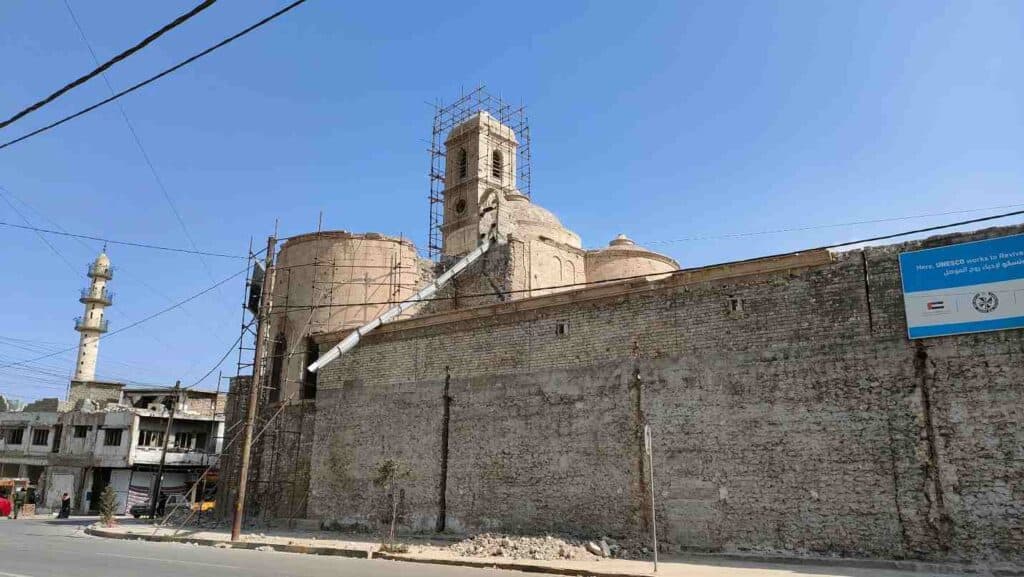
Al-Nabi Sheet Mosque
This enormous mosque was built by the governor Mustapha Pasha al Nishangi in 1647 after he saw the tomb of Nabi Sheet in this location in his dream, which was outside the city wall and is also under heavy reconstruction.
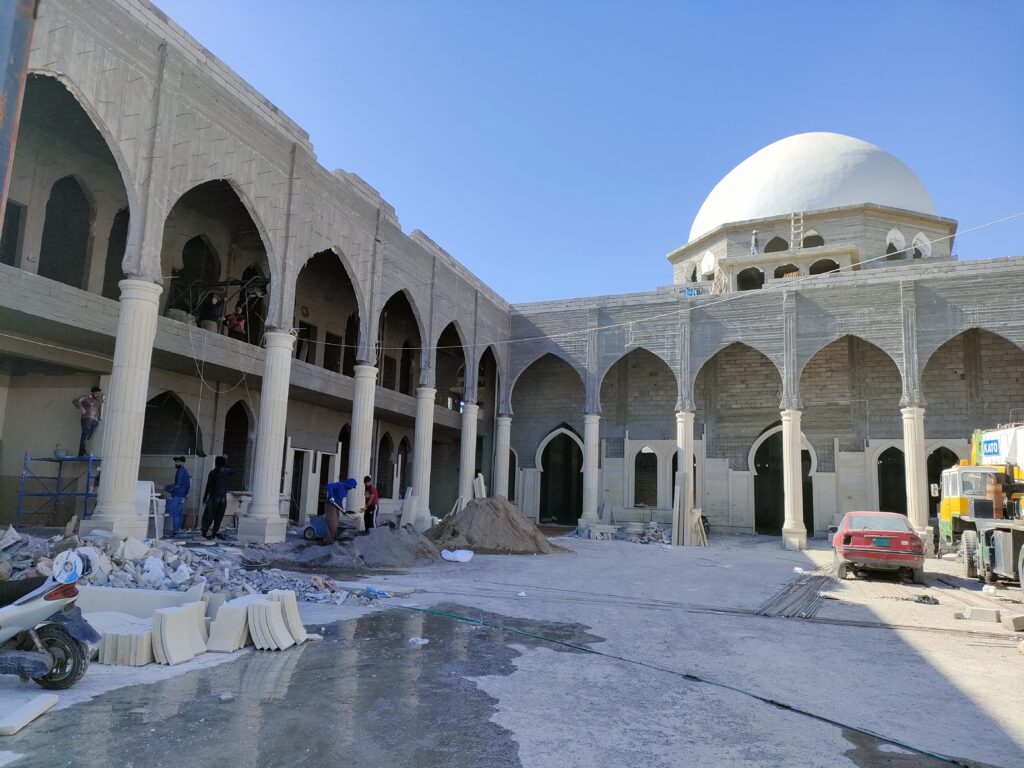
Mosul Archeological Museum next to the Garden of Martyrs
ISIS said its statues were against Islam and threatened to destroy the museum’s contents. They claimed that the museum promoted idolatry. ISIS published a video that went viral, shattering the museum’s artifacts. Most of them were not originals, as a large part of the collection was delivered to the Baghdad Museum after the war in 2003.
The museum opened in 1972 and became the second-largest museum after the one in Baghdad, having a precious gallery of Assyrian artifacts. It displayed artifacts from excavations in north Iraq. The most important are the reliefs, ivory carvings from Nimrud and statues, and reliefs from Hatra. Pre-Islamic remains and Islam artifacts from Mosul and its surroundings.
The museum is still under reconstruction, with only one hall reopened. You can try to ask permission from the project director to have a look inside.
They estimate the museum to open in 4 years.
Bab al-Saray souk
ISIS heavily damaged the first commercial outlet in the heart of Mosul, and after reconstruction, it reopened in July 2020. It was a pile of rubble; no one could identify the shops. More than 90% of it was destroyed. UNESCO has classified it as a cultural heritage site in Mosul.
A maze of narrow alleys makes up the bazaar of Mosul. It is far from being as crowded as during the time before ISIS, but locals stroll around, and it is probably the soul where you feel the most that life is returning to Mosul.
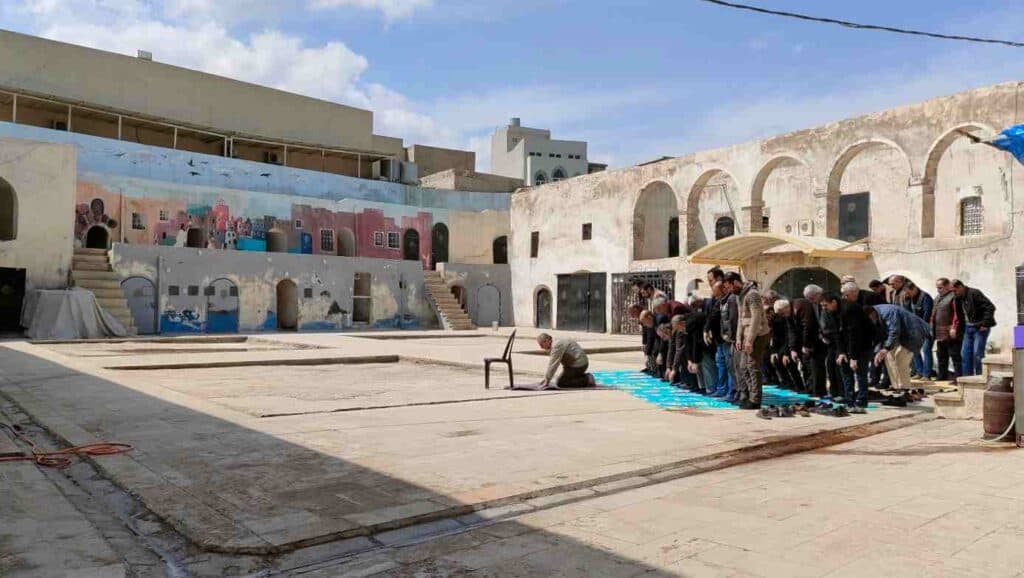
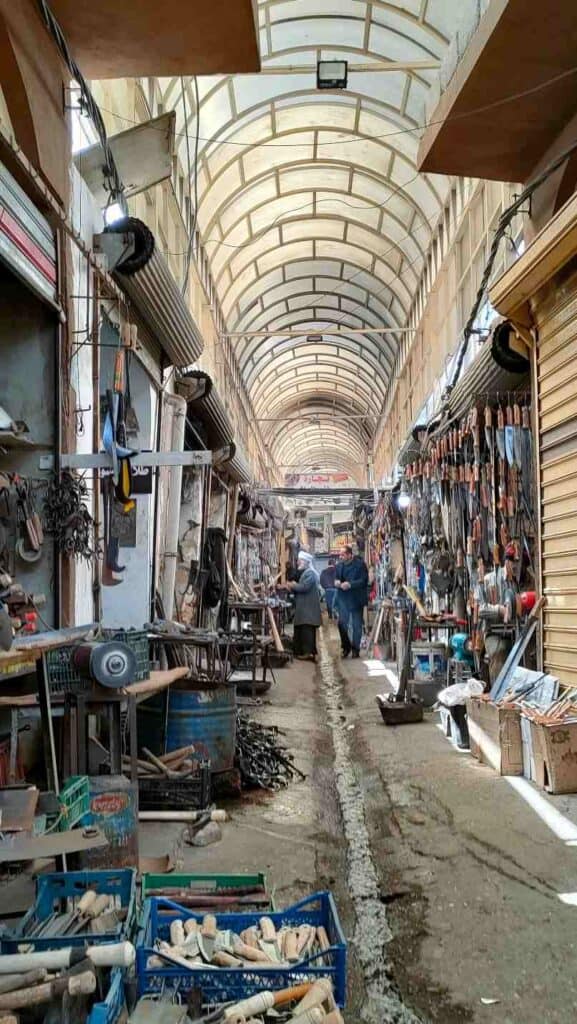
The fish market is on the other side of the main road, where you can try Masgouf, Iraq’s most famous fish meal.
In the street of the blacksmiths, look for the famous weightlifter, the former winner of multiple Asian cups, the national pride of Iraq, Talal Hassoun. Since he retired from the sport, he has been working in one of the workrooms, but his photos of international competitions remind everybody who passes by of his glorious achievements. Inside the souk, a mosque opens up in a big courtyard.
Al Tahira Syrian Catholic Church
The reconstruction of the Al Tahira church, built in 1862, is currently underway, supported by UNESCO and the United Arab Emirates. It is one of the places you should visit while in Mosul. Amid the ruins, you can see the beautifully decorated columns. The church was used as an office by ISIS during the city’s occupation. It was also destroyed by an airstrike.
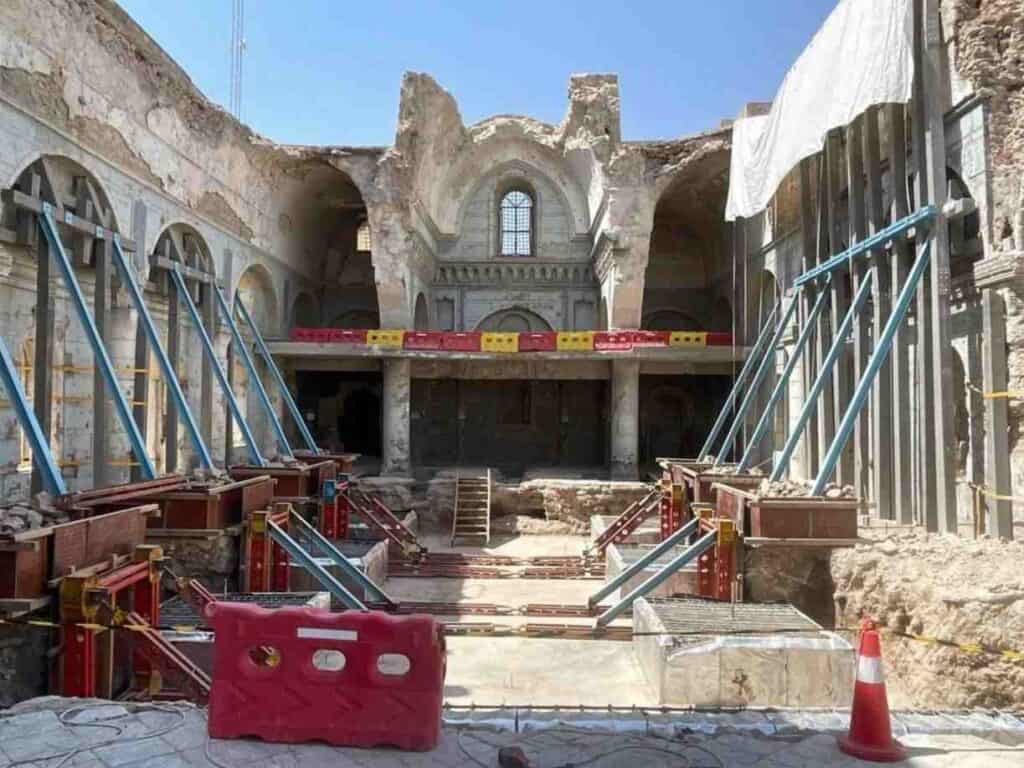
Al Masfi Mosque Umayyad mosque
The 19th-century mosque was probably built at the site of one of the first mosques after the Islamic conquest in the 7th century, making it the 5th oldest in the world after the famous mosques of Medina (Quba and Prophet’s Mosque, Sana’a and Basra.
It was named after Al-Haj Mohammed Musfa Al-Thahhab (“the man who cleared the gold”), a wealthy benefactor who funded its reconstruction in 1847.
This is one of the monuments that google maps does not show in English. Walk to the end of the street where the fish market is located.
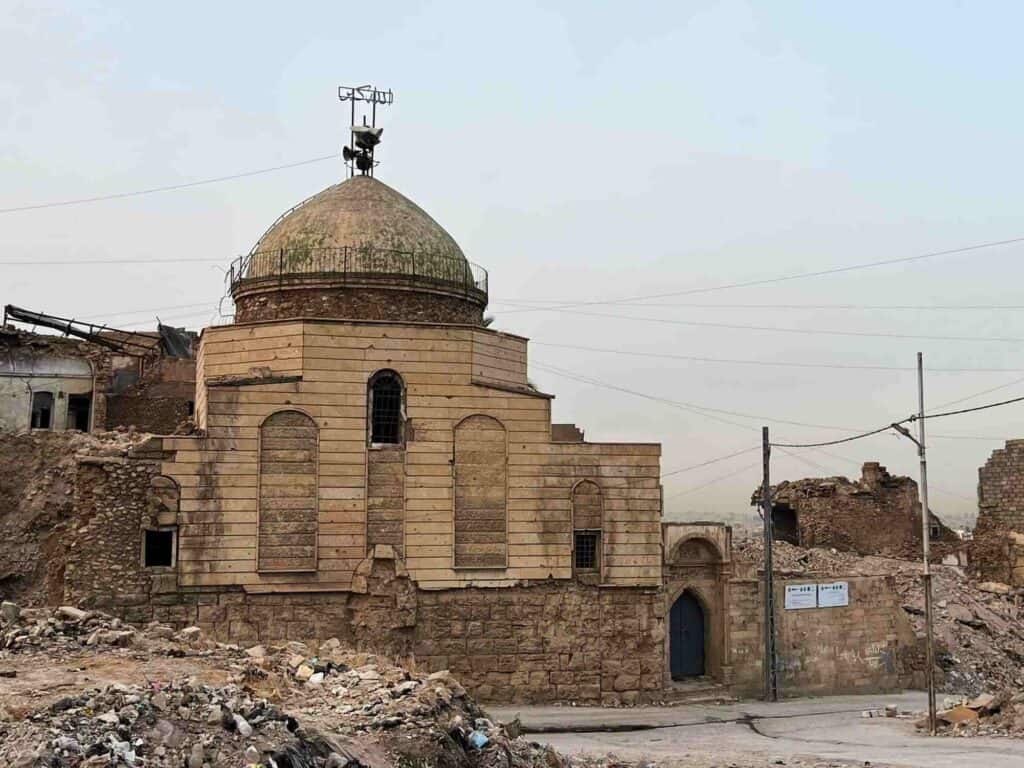
Al-Raabiya Mosque
The 18th-century Al Raabiya Mosque was one of the most attractive mosques in Mosul before it also fell victim to the destruction of ISIS. The most remarkable part is the dome decorated with turquoise tiles featuring calligraphy and geometric patterns. It was named after the governor’s daughter, Ismail Pasha Jalili, Rab’iya Khatun, who financed its construction.
You can see the partly ruined mosque through the nicely decorated iron gate. Despite several damages, it is still one of the places worth visiting in Mosul.
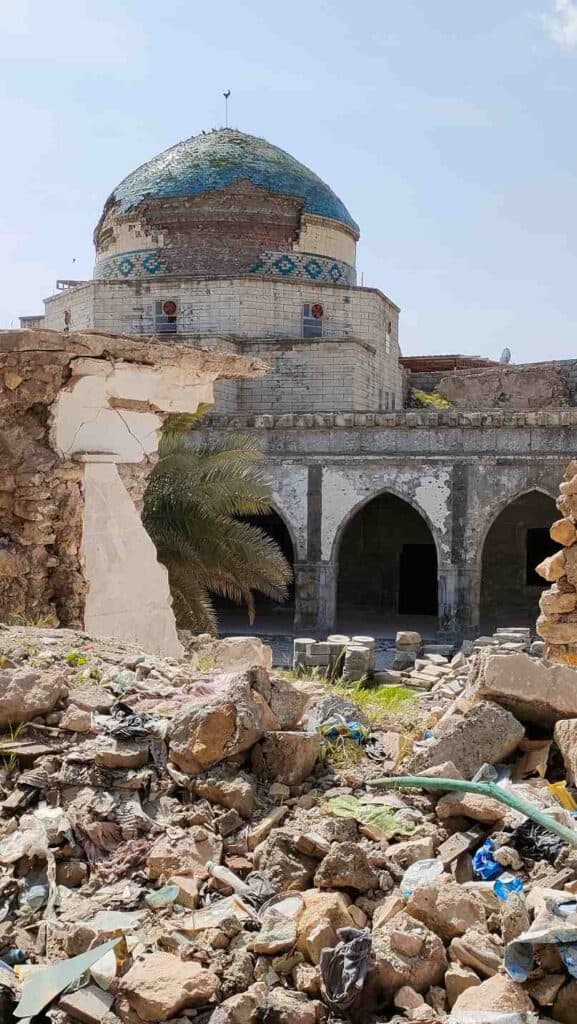
Mar Thoma Jacobitan church – one of the most beautiful churches in Iraq
It is one of the oldest historical churches in Mosul. The church is named after St Thomas the Apostle, who preached the gospel in the East. It is believed to be built over the site of the house occupied by the Apostle during his visit to Mosul. In September 2021, a new 285kg bell was inaugurated.
On 30th April 2022, the church held the first mass since ISIS was defeated.
Although it was reopened a few months ago, but not regularly, your local guide may help you get access to the church. Al Bashira Syrian Catholic Church is the only fully functioning church at the moment in Mosul.
Things to do in the East (modern) part of Mosul
The Nebi Junis hill is the old city on the left bank of the Tigris River. The hill is one “tell” (raised mound marking the site of an ancient city) of Nineveh, but as the sacred mosque stands on top of that, regular excavations were not possible. They suspect that remains of an Assyrian fort palace and temples could be found under the hill.
Nineveh, Nergal gate
The last Assyrian capital was inhabited since ancient times, the 6th century BC. Only the ruins of the old city wall and the gates are visible. After the attack of Medes and the Babylonians, the Assyrian Empire fell in 612 BC. Nineveh is now a suburb of Mosul. The Islamic State fighters broke the face of Iamassu, a mythical creature that guarded the entrances of the Assyrian Palaces. And blew the gate up, the remains of which are still seen.
Nebi Yunis mosque – the most important place to visit on the east side of Mosul
The mosque connected to Prophet Jonas stands on the highest point of a hill that is part of the ancient Nineveh. As described in both the Quran and the Bible, Jonas travels to Nineveh to warn the citizens that they await disaster unless they repent their sins. When Jonas refuses to preach to one of Israel’s greatest enemies, God punishes him. When he embarks on a boat, God creates a big storm that pushes Jonas into the sea. Swollen by a whale, he spent three nights and three days in the belly of the fish before ending up on the shores of Nineveh.
Once there was a Christian monastery at this place that was converted into a mosque in the 10th century. According to tradition, a Persian fire temple stood there in the 4th century before the Christian monastery. The mosque was rebuilt, but the structure of the original Christian temple can still be recognized. The Prophet is believed to be buried where once the church’s sanctuary was.
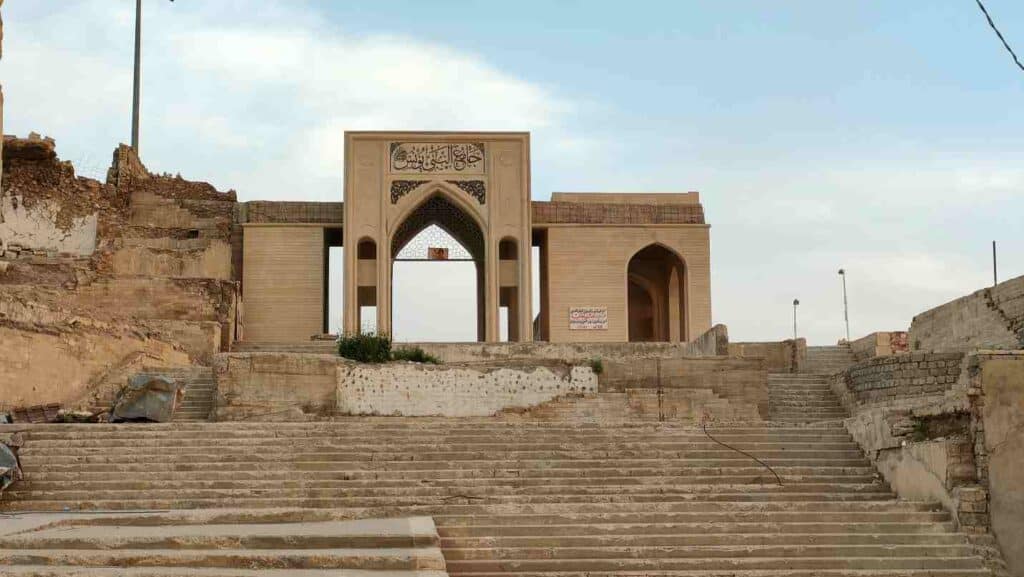
Since the story of Jonas is also mentioned in the Quran, it has been an equally sacred place for Muslims and Christians.
However, Nebi Yunis is full of mystery, and the hill where the shrine stands contains more than that.
The excavations carried out in the 1850s revealed the remains of the late Assyrian kings’, Sennacherib’s, and Ashurbanipal’s palace and a base for the Assyrian army from the 7th century BC buried under the shrine.
In July of 2014, the Islamic State militants wired and exploded the mosque turning it into rubble. However, the explosion revealed previously unseen tunnels under the hill. Some say that ISIS dug the tunnels to loot the Assyrian artifacts and get money from selling antiquities, which was their second-largest source of income after oil.
Next to the shrine, it is worth strolling around in the Nebi Yunis market as well.
Al-Zuhour neighborhood
It is a pleasant neighborhood with a range of local shops and restaurants.
Mosul Woods
Opposite the ruins of the Bashtabya fortress, on the other side of the Tigris river, is the forest area with several parks and recreational areas.
Take a boat ride on the Tigris River
Once in the Mosul Woods, you can find boats in any private park along the Tigris river. It is available all day, takes approximately 10- 15 minutes, and costs 10-20 000 IQD depending on the time. You can ask to include the boat ride in your guided tour of Mosul.
University of Mosul
The University of Mosul was not only one of the most prestigious in Iraq but also one of the largest educational centers in the Middle East. Most buildings were bombed or destroyed, and ISIS burned the central library and theater. The university has been almost entirely renewed, but some classes are held in other buildings until the construction is completed.
In the meantime, a new university, the University of Nineveh was opened.
What are the best places to visit on a day trip from Mosul?
1. Alqosh, Rabban Hormizd Monastery, Lalish
Alqosh
Alqosh is a small town 45 km north of Mosul with a Chaldean Catholic Assyrians community of great importance. Christian minority is now on the verge of extinction in the land where they had been present since the earliest times of Christianism. There were 1.3 – 1.5 million Christians in Iraq before the US invasion in 2003. It reduced to 500,000 before ISIS began its genocidal campaign. Today they amount to 150 000. During the last five years, Christians of Iraq left the country in masses.
The town has two monasteries and four churches, and exclusively Christian inhabitants. Alqosh is the best place to learn more about Christianism in Iraq.
The Bible says that Prophet Nahum lived here, whose grace with ancient Hebrew texts is found in the center. Earlier, many Jewish people visited the site site.
Many Christians fled Alqosh during the threat of ISIS as the jihadists were only stationed only a couple of km away. However, some stayed and bravely fought with the Kurdish Peshmerga soldiers to keep them away.
Rabban Hormizd monastery
The Monastery of the Chaldean Church has an impressive location carved into the rocks overlooking the village of Alqosh. Rabban Hormizd (Rabban means monk in Syriac) founded it in about AD640 is located in the autonomous Kurdistan region of Iraq and was a primary center of the Church of the East. The monastery was attacked several times, forcing the surviving monks to abandon it temporarily. In 1838, Kurds attacked Alqosh, whereby monks and hundreds of Assyrian Chaldeans died.
After the turbulent years, in 1859, with the financial support of the Vatican, a new monastery was built a few kilometers away, where it was safer.
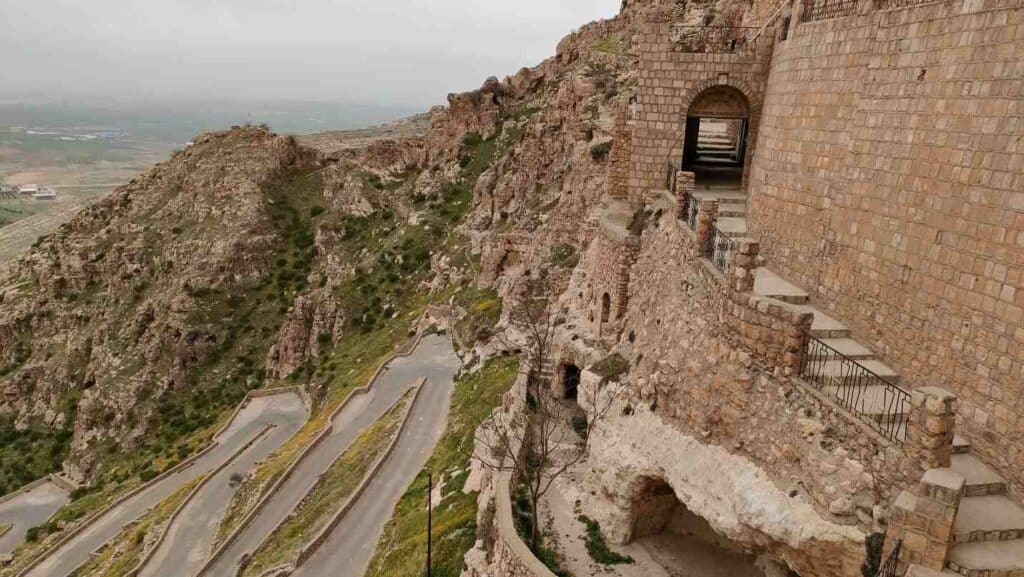
Lalish
The Yezidi minority has strong links to the Kurdish people, but they are a separate ethnic group with their own religion. A chief sheik and an Emir are the leaders of the Yezidi community. Throughout history, their followers have been prosecuted because they refused to convert to Islam. They were also labeled as heathens and devil worshippers as they venerated angels during the Saddam regime.
Read this book about Yazidi people’s hardships during ISIS
Yezidi people were also the most persecuted by ISIS. Many were executed or had to flee.
The Temple of Lalish is the sacred place of the Yezidi people. It is the burial place of Sheikh Adi that every Yezidi wishes to visit. It has a unique atmosphere and gets especially busy during the Yezidi New Year in April.
When going to Lalish, you must remove your shoes already at the parking lot and walk barefoot or in socks. Also, never step on the doorstep of the shrines and temples in Lalish.
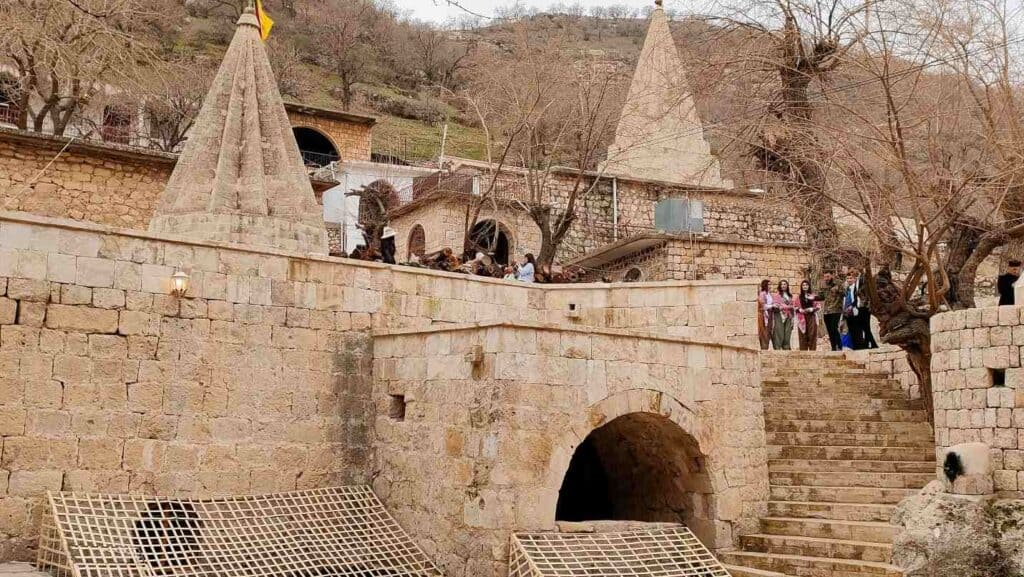
2. Mar Behnam monastery – 40km from Mosul
Mar Behnam is a complex of a monastery, a church, and a mausoleum dating back to the 4th century. Its story is closely linked to that of the Mar Matta monastery. It was built at the site where prince Behnam, who lived in the 4th century and was the son of an Assyrian ruler, suffered martyrdom. He was hunting a deer with his 40 horse riders when he fell asleep while resting at a spring close to where Mar Matti slept in a mountain cave. In his dream, he was told to climb the mountain to meet a saint who performed miracles.
Mar Matta followed the prince to the city and cured his sister, Sara, of leprosy. Behnam converted with his sister to Christianity, but it angered their father, the king, who ordered their execution. They found refuge at the cave of Mar Matta, but they were killed. At the moment of their deaths, the ground shook beneath the soldiers’ feet, and the king lost his mind. Despite the efforts of the best doctors in the land, he could not be cured.
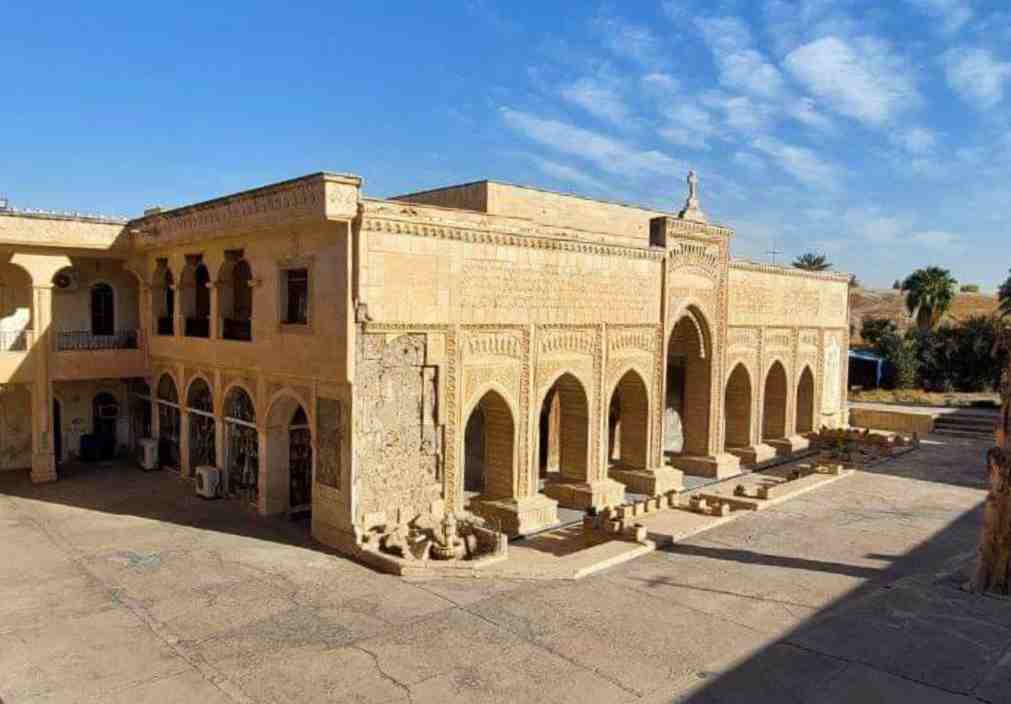
Mar Matti healed the king in the name of Jesus Christ. After his recovery, the king, remorseful for his actions, embraced Christianity and proclaimed his faith across his kingdom. He helped Mar Matti and his monks to build the first monastery, which became the Mar Mattai monastery, and it became a holy and blessed place for all believers and seekers of healing.
The monastery first belonged to the Jacobians and then the Syrian Catholics. During the centuries, it was several times ransacked, and its monks scattered.
In 2014, ISIS took the monastery, forcing the priests to leave and refusing to let them take the monastery’s holy relics.
Sadly, it appears the tombs of Behnam and Sarah were destroyed by ISIS, who kept them under control for two years, but reconstructions finished in 2018.
How to get there?
You can get there by private taxi only.
3. Hatra – Unesco World Heritage and one of the most impressive archeological sites of Iraq
The “City of the Sun”, Hatra developed into a trading center from a small Assyrian village. It flourished in the 1st and 2nd centuries under the Parthian rule as part of the series of renowned Arab cities like Palmyra, Petra, and Baalbeck along the silk road. The golden period ended when the Sassanid king Shapur I destroyed it in 258. Hatra was deserted after, and its ruins were only discovered in the 19th century. For a long time, it was the only UNESCO World Heritage Site in Iraq.
The center of Hatra comprises a group of temples with massive columns that remained surprisingly intact. Hatra can quickly become the highlight of your trip to Iraq.
Rumors started to spread in 2015 that ISIS plans to flatten the site, but apart from engraved images and statues, the walls and towers remained intact, and the damage was smaller than expected. During their two-year-long occupation, it served as training a training camp, the statues of Gods being used as target practice.
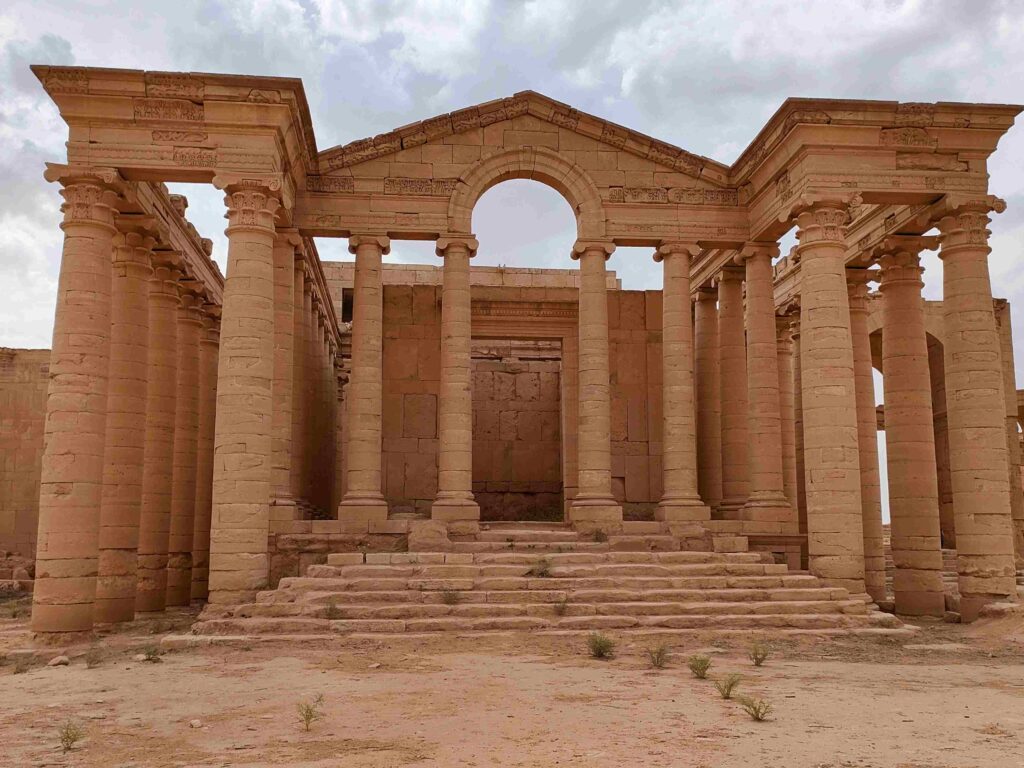
How to visit Hatra?
You must know that the rules for visiting Hatra are constantly changing for security reasons. It is located in a deserted area far from any cities, an ideal refuge for the remaining ISIS fighters in Iraq. Sometimes they ask for a special permit to get to Hatra that you can get from the Ministry of Interior in Baghdad. Contact locals to help you get a permit if needed.
In any case, always go at the latest in the afternoon, because it may be unsafe in the evening. For safety reasons, soldiers at the checkpoint accompany visitors and limit the time of visit.
When I was there, I didn’t need any permit to access Hatra, but the soldiers urged us to visit the complex within 15 minutes.
VisitMosul can help you arrange your visit to Hatra, get the permit if necessary, provide transport and facilitate getting through checkpoints. Because of the constantly changing rules and security issues, it is better not to go there alone, risking being turned back.
4. Hammam Al-Alil thermal spa – 35 km south of Mosul
Hammam Ali had been a popular health resort before ISIS came. After its liberation in 2017, it opened for tourists again. The sulfur springs have existed since ancient times, and the people of Nineveh visited it masses for their healing effects. They built a medical complex in the 1970s that men and women could use separately.
5. Qarakosh – 35 km from Mosul
Qaraqosh, also called Bakhdida, is where the pope gave a sermon during his visit in March 2021 in the Church of the Immaculate Conception, which was vandalized, desecrated and burned by the Islamic State. He encouraged the Christians of Mosul to rebuild not only their buildings but revive their community as well.
It is an Assyrian city not far from the archeological sites Nimrud and Nineveh. They opened a new branch of Mosul University, the Al-Hamdaniya in 2014 here, but the central university in Mosul remains the most prestigious.
The city had hard times during the presence of ISIS. The extremists first cut its water supply, then introduced an embargo on trade with Bakhdida. When Kurdish troops retreated from the town in August 2014, ISIS immediately captured it and took hold of Qaraqosh for two years. Most inhabitants joined the masses of refugees to find refuge in Erbil.
Qarakosh is an important archeological site with the remains of former fortresses and temples related to Nimrud, the former capital of Assyria. The artifacts were displayed in the British and Mosul Museum.
Once in Iraq, you should include Mosul in your Iraq itinerary, the city the most destroyed by ISIS. While seeing the massive damages is certainly heartbreaking, seeing the constructions at every corner anticipates a better future. All that happened is part of history, and locals welcome travelers with a smile and great hospitality. There are plenty of places to visit in a day in Mosul, and you can also make day trips. If you want to visit Mosul, you must start your tour in Federal Iraq as the Kurdish visa is not valid here. Stroll amid the ruins to discover hidden architectural gems, go to the Mosul Heritage House and the Bytna Cultural House, and try the local “Kubba”. Join a guided tour to make the most of your stay and understand what the people of Mosul went through.
Other articles about Iraq
All you need to know before traveling to Iraq
What to visit in Baghdad in 3-4 days
The best books to read about Iraq (constantly updated)
More articles about the Middle East
Lebanon
10-day itinerary to visit Lebanon
How to spend 2-3 days in Beirut
Travel guide to Tripoli, Lebanon
Best books to read about Lebanon
Traveling around Lebanon during the economic crisis
Iran
What you can and cannot do in Iran
45 things you must know before traveling to Iran
The best books to read about Iran
The best 2-week itinerary in Iran (the classical route)
All you need to know about the Iranian currency
The best places to visit in Tehran (museums, palaces, religious sites)
The best things to do in Tehran
Travel guide to Tabriz, North Iran
Travel guide to Mashhad, the holy city of Iran
Best things to do in Lahijan, the city of tea in Iran
Best things to do in Ramsar at the Caspian Sea
Visit Varzaneh desert, Toudeshk, Mesr desert and Garmeh from Isfahan
Jordan
The perfect Petra one and two-day itinerary in Petra
Visiting Jerash, Ajloun and Umm Qais
Jordan desert castles: a day trip from Amman
5, 7 and 10 day Jordan travel itineraries
All you need to know before planning a trip to Jordan
Pin it for later!
